#Tower of God 630
Explore tagged Tumblr posts
Text
Summary of #630, basically
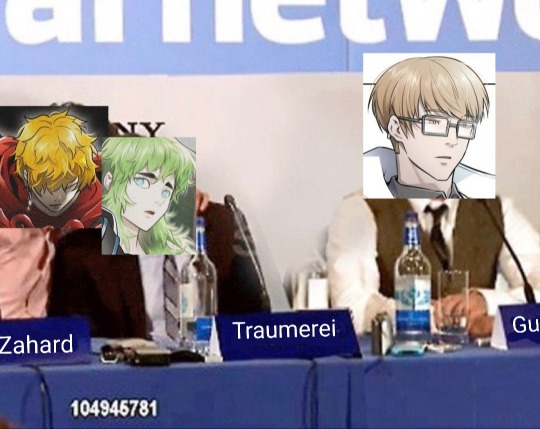
Original for reference:

#Tower of God#Tower of God 630#Lo Po Bia Traumerei#Zahard#Poe Bidau Gustang#I wish I could draw😭 Until then I'll just have to make do with quick edits like these#Crazy how this is their canonical dynamici n a nutshell. RIP Gustang#your rival slash bestie really switched up on you there.#You say “Traumerei revenge is pointless” ONE time...
13 notes
·
View notes
Text
I'm on the verge of a breakdown, a few min. have passed since I read the chapter but my hands are still shaky and I NEED the next one. SIU you beautiful person you, you have truly shaken up my world today
He's here yall. We finally get to see him.
⚠️Spoilers Ahead⚠️
.
.
.
.
.
.
.
.

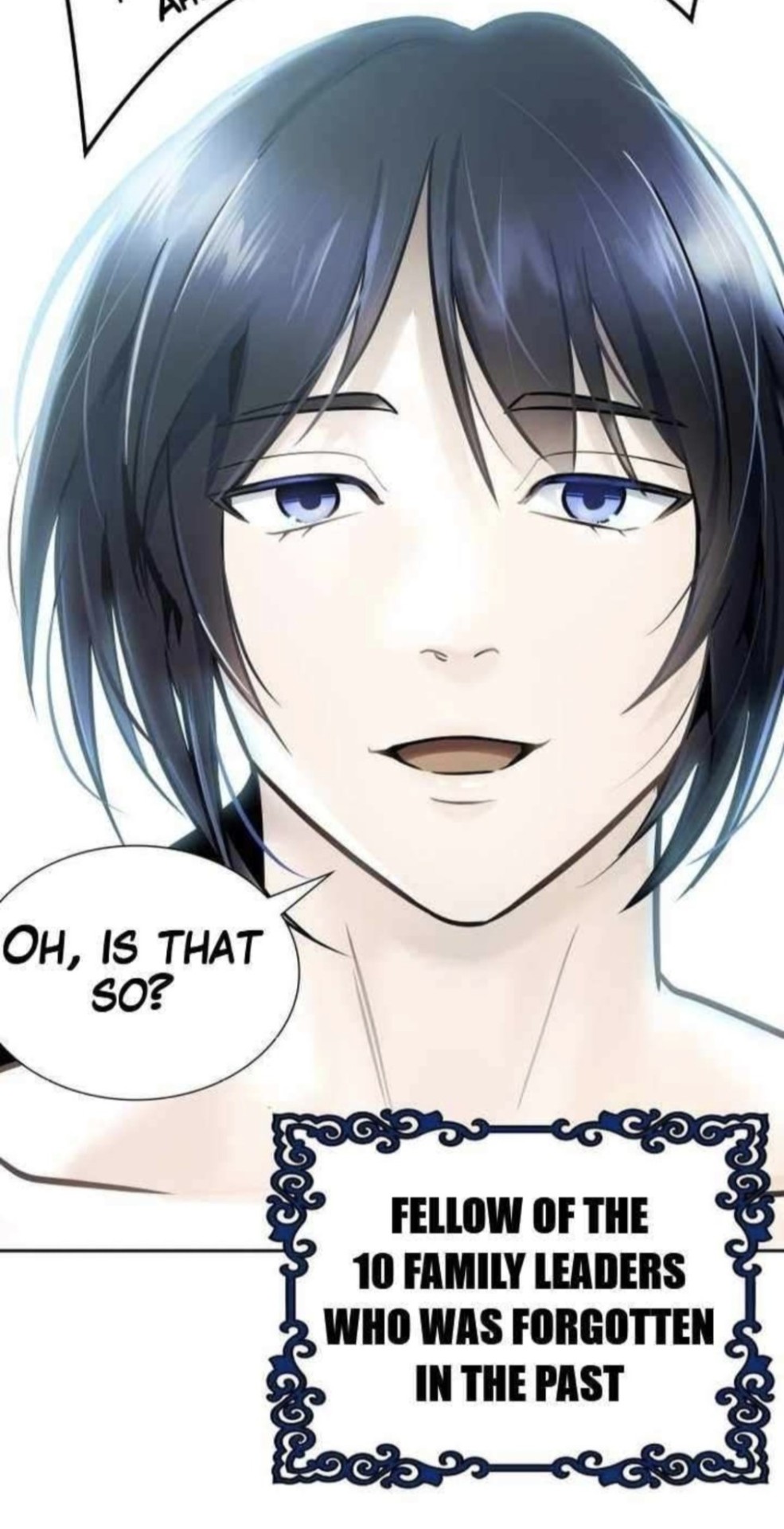
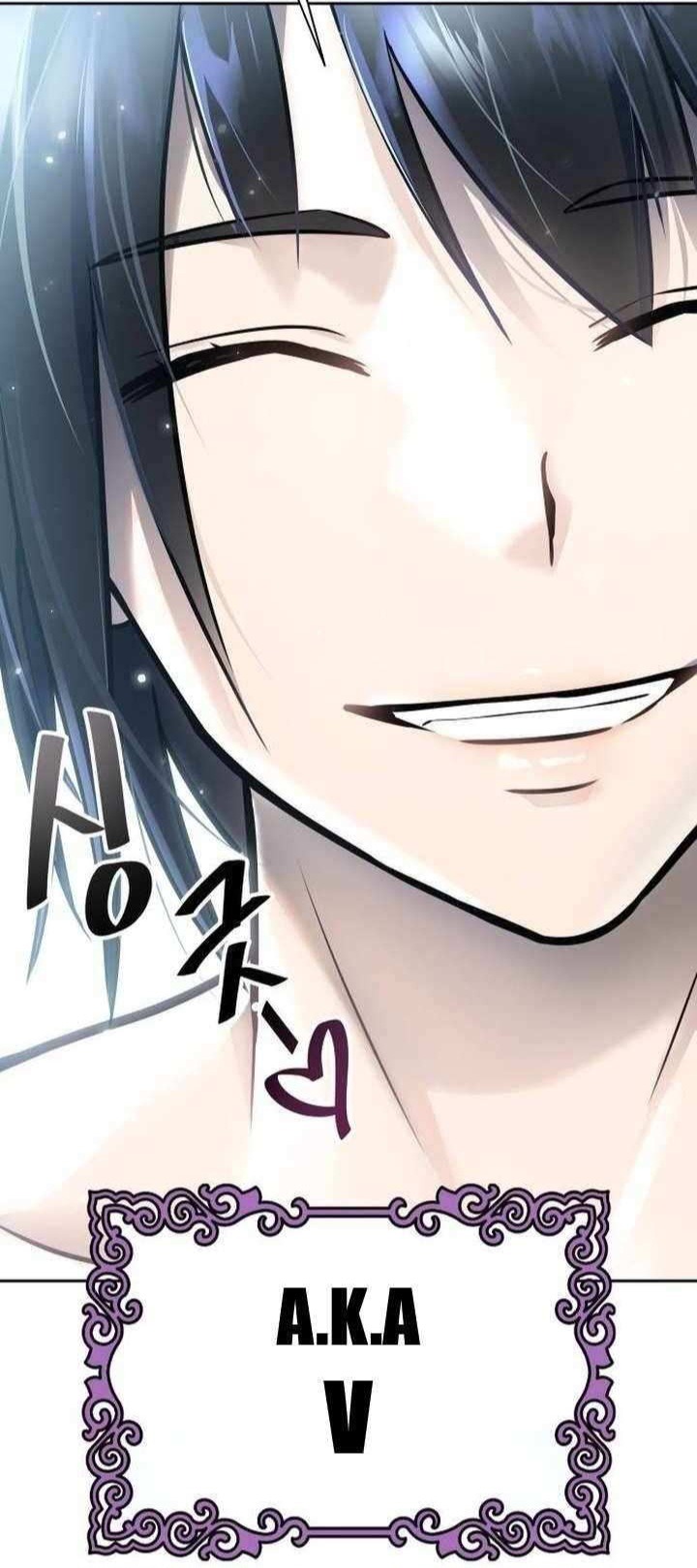
V and Bam have the same smile!!!!!!! AAAAAAAHHHHHH!!!!!

I can't do this. I cant. SIU!!!!!
#tower of god#Tower of God Ch.630#Tower of God Spoilers#Tower of God V#My hands are still shaking#SIU#Tower of God Season 3 spoilers
33 notes
·
View notes
Text
Chapter One: Catering.
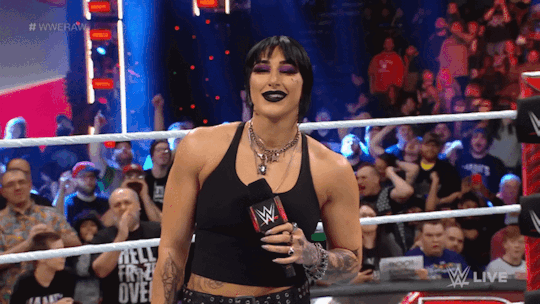
Word Count:630
April 18th 2022. The date replayed in her head like an ongoing record that could never be shut off. An annoying itch in her brain. It was the day she lost someone she thought loved her. Rhea Ripley.
Liv recalls that day very clearly in her mind,never letting it slip away. She was so close to a victory but let Rhea down..then lost her. Everything in her mind was spiraling, she tried talking to Rhea backstage but was just ignored and pushed to the side. She felt hopeless and alone.
She finally teamed with Raquel and moved on, but just when things were going well..Rhea came crawling back to ruin it. Injuring her tag partner. “You know Liv..if only you would’ve listened to me when i offered you a spot in my group.” she would constantly remind Liv every single day..until she did the unthinkable. She injured Liv.
———
Rhea sat backstage every Monday, watching every match since Liv had, even traveling to Smackdown. She felt bad for stalking a former lover like this when she has Dominik but..Dominik had other plans with Damian anyway so it didn’t matter to her what she did that much.
Rhea glanced at her phone, looking at the time only to see a text from Damian saying he’ll be with Dominik for the night. She chuckled silently to herself knowing exactly what he meant, tucking her phone into her pocket before rising out of her slightly uncomfortable chair. She decided to head to catering to grab a small snack since she barely ate all day, but there she was. The woman she was stalking. Liv Morgan. They made eye contact for a split second before Liv turned her attention back to the bottle of water she was grabbing. Rhea could only smile, she knew deep down Liv still loved her and only masked it with hate.
Liv tried to ignore her and just drink her water peacefully while relaxing after her match that got interrupted by Becky Lynch. Little did she know Rhea had followed her there and was watching her every single move. She felt the couch she was sitting on sink next to her and froze, not daring to see who it was..until she heard that familiar voice. “Liv..had a great match out there hm?” Rhea spoke, breaking the silence between them. It was just them two alone in the room, giving Rhea granted access to do whatever she pleased. Liv finally decided to give Rhea a quick look, or so she thought. It was like she was in a trance all over again. She just couldn’t look away which tortured her.
Rhea smiled as she noticed this, setting the plate of fruit she had down on the small coffee table and scooting closer to Liv. Before Liv could even process what was happening, she was straddling Rhea’s lap kissing her. God how much she missed these soft lips of hers..suddenly snapping into reality and pulling herself off of Rhea. “Awe what’s wrong honey? We were just getting started..” Rhea spoke softly as she stood up, towering over Liv who just stood there slowly processing everything. “I..I fucking hate you!” she yelled as she stormed out of the room leaving behind her water. ‘Sure you do’ Rhea thought to herself chuckling, grabbing her fruit and heading to her locker room. She noticed a note on her black vanity and began reading it as she munched on the pineapple from her plate.
“Meet me in room 222
- Liv. ”
Rhea has never grinned this wide in her life. Quickly finishing her fruit, she packed up her stuff and checked the time. 9:30. Enough time for her to go to her room before meeting Liv.
#wwe#rhea ripley#judgement day#dominik mysterio#women of wwe#rhea ripley smut#rhea ripley x liv morgan#liv 4 brutality#liv morgan
94 notes
·
View notes
Text
Stresichorus and Helen in Egypt
The version of Helen at Troy is merely a phantom and the real one is at Egypt from Euripides' Helen play can be traced back at least as early from Stresichorus who lived in the 630–555 BC. Traditional writers put Stresichorus in contemporary with Sappho and Alcaeus, who also wrote poems reportedly Wooden Horse, Return of the Greeks, Sack of Troy, Oresteia, and works revolved Heracles. A good chunk are events of the Trojan War cycle. Like the former he also painted Helen in a bad light, except later according to legend, Helen blinded Stresichorus for this reasons. Retracting his statement, he wrote the Palionde (now lost) providing an excuse for Helen (while Homer did not do the same - hence he remained blind in the below passage).
The interesting part is that Helen has powers which would indicated her being seen as a goddess here.
This is not the true tale: You never went in the well-benched ships You did not go to the towers of Troy… [It is a fault in Homer that He put Helen in Troy And not her image only; It is a fault in Hesiod In another: there are two, differing Recantations and this is the beginning. Come here, dance loving goddess; Golden-winged, maiden, As Khamaileôn put it. Stesichorus himself says that an image [eidolon] went to troy and that Helen stayed back with Prôteus…
-Stesichorus, fr. 15 (the Helen Palinode). Translated by Joel Christensen.
…they put on airs as though they amounted to something, if they could cheat some mere manikins and gain honour among them. Now I, my friend, must purify myself; and for those who have sinned in matters of mythology there is an ancient purification, unknown to Homer, but known to Stesichorus. For when he was stricken with blindness for speaking ill of Helen, he was not, like Homer, ignorant of the reason, but since he was educated, he knew it and straightway he writes the poem [Stesichorus Frag. 32 Bergk]:“That saying is not true; thou didst not go within the well-oared ships, nor didst thou come to the walls of Troy.”
-Plato, Phaedrus, 243a,
Hesiod listed Helen alongside her sisters as examples adulterous wives, citing the behavior started from their father Tyndareus for forgetting to honor Aphrodite. Attributed that Stresichorus' also shared this account.
Smile-loving Aphrodite Was enraged when she saw them: then she hung bad fame upon them. After that, Timandra abandoned Ekhemos and left; She went to Phyleus who was dear to the holy gods. And so Klytemnestra abandoned shining Agamemnon To lie alongside Aigisthos as she chose a lesser husband; In the same way, Helen shamed the marriage-bed of fair Menelaos…
-fr. 176
“Stesichorus says that when Tyndareus was sacrificing to the gods he overlooked Aphrodite. For this reason, the angry goddess made his daughters thrice and twice married deserters of husbands. The segment reads like this: “Because when Tyndareus was sacrificing to all the gods He neglected only the gentle-giving Kyprian She was enraged and she made the daughters of Tyndareus Twice and thrice married deserters of husbands.”
Guy Smoot wrote an insightful extensive analysis on whether Homer included such elements in the Odyssey and why he believed Stesichorus didn't invented the concept, going off historical and literary preclassical Greek contexts.

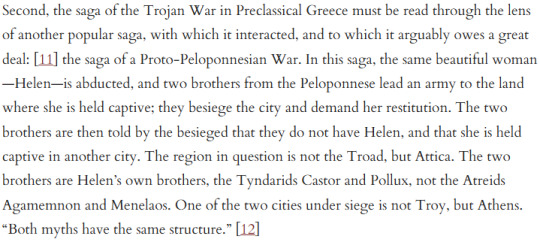

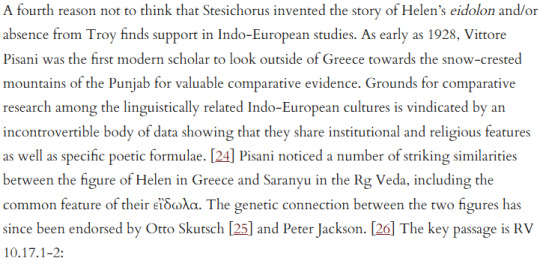
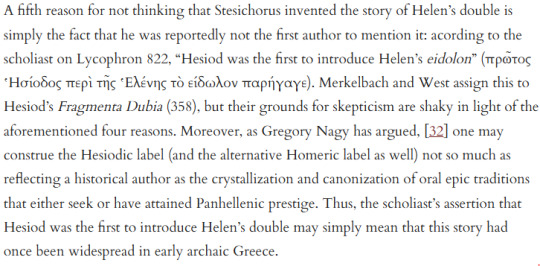
3 notes
·
View notes
Text

LIGHT OF LIFE 630
John 1:4
DIVINE ORDER 195: WORKING ORDER 90
2Ti 4:6-7 For i am now ready to be offered, and the time of my departure is at hand. I have fought a good fight, I HAVE FINISHED MY COURSE, I have kept the faith: Henceforth there is laid up for me a crown of righteousness, which the Lord, the righteous judge, shall give me at that day: and not to me only, but unto all them also that love his appearing. KJV
MAN MUST WORK 41: FINISHING WELL 12
Now let’s move on to the next point raised in Paul concluding statements to Timothy.
4. I HAVE FINISHED MY COURSE
All Christians must know that there is a difference between FINISHING YOUR COURSE and TIME-UP.
In an Exam hall, whenever the Invigilator says: “Time Up”, only a few have completely answered all questions and are probably waiting for that voice, while the majority are forced to stop and hand over incomplete papers.
Many even come out of the exam room questioning their performances and wishing they had done better with certain of the questions, but it’s too late, isn’t it?
This is why Paul separated these two points and even gave them distance. He said before: “The time of my departure is at hand”, now he says: “I have FINISHED my course”.
Your time could be up while your job is not completed, maybe because of neglect, slackness, misunderstanding and lack of focus on your part.
Jos 13:1 Now Joshua was old and stricken in years; and the LORD said unto him, Thou art old and stricken in years, and THERE REMAINETH YET VERY MUCH LAND TO BE POSSESSED. KJV
No statement can be more imposing than the one you have to hear from God’s mouth directly and by yourself.
It would have been fascinating if we had such privilege too, but won’t it be saddening if you heard that you didn’t complete your assignment and yet, you have no opportunity, strength or wherewithal to complete that task anymore?
It gets worse if for an offensive reason, God actually cut short your time and makes it impossible for you to complete your task, particularly handing over your position to someone else.
Deu 31:1-2,7 So Moses said all these things to Israel. Then he said to them, I AM NOW A HUNDRED AND TWENTY YEARS OLD; I AM NO LONGER ABLE TO GO OUT AND COME IN: and the Lord has said to me, YOU ARE NOT TO GO OVER JORDAN. Then Moses sent for Joshua, and before the eyes of all Israel said to him, Be strong and take heart: for YOU ARE TO GO WITH THIS PEOPLE INTO THE LAND WHICH THE LORD, BY HIS OATH TO THEIR FATHERS, HAS GIVEN THEM; by your help they will take it for their heritage. BBE
Too many other projects are left unfinished by the visioners, who mostly die before they can complete, and then most of such projects suffer in the hands of those who hardly have any bearing with them.
If they are merely men’s projects, then it means little, right?
Luk 14:28-30 For which of you, wanting to build a tower, doesn’t sit down first and compute the cost TO SEE IF HE HAS ENOUGH MONEY TO COMPLETE IT? Otherwise, when HE HAS LAID A FOUNDATION AND IS NOT ABLE TO FINISH THE TOWER, all who see it will begin to make fun of him. They will say, ‘This man BEGAN to build and WAS NOT ABLE TO FINISH!’ NET
Personal projects that are rarely initiated by divine directives could fail, based on a number of human errors like Biting off more than you can chew, Trying hard to copy someone in envy, projecting without obvious wherwwithal to execute, carelessness in project management, altering design structure out of pride and comparison, sinful associations etc.
1Ki 22:48 King Jehoshaphat built some cargo ships. HE WANTED THE SHIPS TO SAIL TO OPHIR FOR GOLD, BUT THEY NEVER WENT THERE—THEY WERE DESTROYED IN THEIR HOME PORT AT EZION GEBER. ERV
Now the most outrageous and disrespectful thing is where God gives you a responsibility but you back out without completing your assignment.
That’s what Elijah did to God.
1Ki 19:4 Then he traveled through the wilderness for a day. He sat down under a broom plant and wanted to die. "I've had enough now, LORD," he said. "Take my life! I'm no better than my ancestors." GW
Whereas men’s projects may fail and attract mockery and reproach, God’s work can’t fail if we fail Him. He would simply appoint someone else to finish where we abandon the Deal.
1Ki 19:16 Then anoint Jehu son of Nimshi as king over Israel. Next, ANOINT ELISHA SON ofOF SHAPHAT from Abel Meholah. HE WILL BE THE PROPHET WHO TAKES YOUR PLACE. ERV
The painful truth is that only Elisha can tell the full story and testify of completion of the Project. No matter the glorious exit of Elijah with Chariots of fire, he did not finish well.
Meanwhile, there were also those who fulfilled purpose ahead of time and waited for death.
Luk 2:28-30 Then he took him in his arms and gave praise to God and said, NOW YOU ARE LETTING YOUR SERVANT GO IN PEACE, O LORD, as you have said; For my eyes have seen your salvation, BBE
You will finish your God-given Course and you will finish well and strong, IN JESUS NAME.
See you on Friday, as we proceed with this interesting Subtopic.
Brother Prince
Wednesday, February 19, 2025
+234-8055125517; +234-8023904307
0 notes
Text
Unbound Boxes Limping Gods: Disconnected Stories: Issue # 630: Inside the Floating Asylum
Accompanied by all three versions of Xan, who insisted on joining her, future Alexand fights her way towards the internment cells, to where she intends to capture the Guard Tower, to free every prisoner onboard the ship. Alexand’s story, set onboard Floating Asylum Ship One, Mexico, (3992)
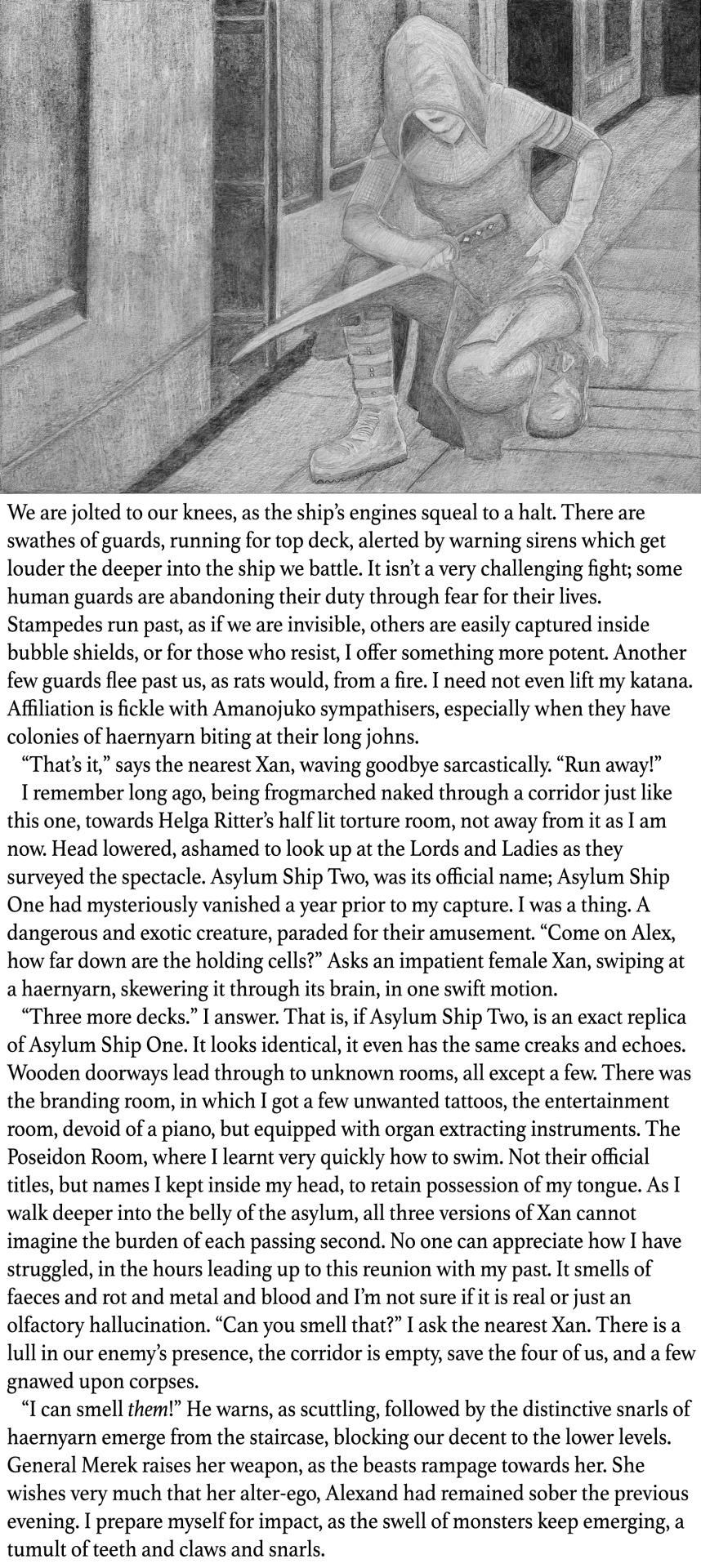
View On WordPress
#Alexand Merek#art#battle#feminist fiction#graphic story#haunted#science fiction#short story#speculative fiction#The Floating Asylum#trauma#Unbound Boxes Limping Gods#Warrior#Xan Medani
0 notes
Text
All the dogs are just as guilty.
"As an AD, I was already at Leonardtown when she got the athletic director's job at Great Mills and we probably communicated almost on a daily basis. If a child is set upon by a pack of hounds, does it matter which one tears out his throat? All the dogs are just as guilty. Supposing these, now, to be all heresies, which of them is the worst?—which will bring the worst practical results? And, if Congregationalism had fought this slavery heresy as some of her leaders fought Dr. Arrive early in the day to allow ample time for viewing big mammals (including bison, bighorn sheep, elk, deer, and black bears) from observation points along the range roads. “Almighty God has been pleased to take away your entire property, and to give you nothing but labor and poverty in this world, which you are obliged to submit to, as it is his will that it should be so. If we eat this way every day I will neve e sale amazon be the size of Illyrio before I meet this dragon queen. Another woman. Adults are not the only ones suffering from weight problems. As a while health christian louboutin outlet related rehabber, Presidency input is one I shoot completely super. There were more of them than he would have guessed—forty-seven in the Gatehouse Tower and another eighteen in the Drunkard’s Tower. Bought it a while back from a car collector's widow over in Cornwells Heights, PA. But Mace Tyrell could not seem to see beyond the threat to his own daughter. If space is extra tight, such as in a narrow two car garage, Park Pilot will confirm a reduced lateral distance setting, fold the mirror, and squeeze the car in.. Tennis was first introduces in India during the colonial rule of England and slowly it gathered the ground till the present moment. Beyond those canvas walls, each man got a heel of bread and a chunk of black sausage no longer than a finger, washed down with the last of Galbart Glover’s ale.. Camarron of the Count put forth a scheme to seize the ships tied up along the baby nike trainersriverfront and use the Skahazadhan to bring three hundred pit fighters around the Yunkish rear. Our enemies are in disarray. For one instant it seemed to me she
bocanci grisport 480
was delirious. Katya simply obeys her without question, and it seems as though there’s some agreement between them about it. I would tell him that the commandments of some men, and not the commandments of God, made slavery a sin.—Smylie on Slavery, p. Squirrel slipped away, soft-footed as she always was. "When people see potential, especially with the coaching staff, it means they're going to push me to reach that new level. This is all right, this is doable, this is good.' I wake up moustiquaire lit 1 personne ikea the next morning. His distracted wife kept guard at his door, struggling with men armed with bludgeons and bowie-knives, who swore that they would have his heart’s blood. Megan believes the air marshal may have been drugged. I had no time to raise up a new host.” He turned back to face her. "President Reagan is frequently cited as a source of inspiration for many Republican candidates, so we can think of no better venue from which to bring this historic event to viewers and voters.". But isn't forward facing easier for everyone?Yes, it's easier to interact with your child when she is facing forward, and less awkward to get her into the seat. Ever.''I hear that all the time from the girls,' Jensen says. A 140 mm liquid cooler radiator may also be installed here as well, regardless of thickness this time.. There has been no prosecution of the sort. I will be Thistle the spearwife, and Varamyr Sixskins will be dead. She is a member of Shore Fellowship Church, is training to become a facilitator for the Alcove, and is a member of Atlantic County Community's Emerging Leaders. Even large examples of the People Carrying breed can't take much luggage if you fill all seven seats up with occupants. Bermuda shouldn't but the game should be developed chaussettes bon marchéas it actually has a fan base in Bermuda as opposed to the US and Canadian teams which no one in the US/Canada knows/cares about. When Squirrel returned, the other four were with her: gaunt grey-haired Myrtle, Willow Witch-Eye with her long black braid, Frenya of the thick waist and enormous breasts, Holly with her knife. President very much emphasized that there has to be a replace with the repeal, Cassidy added. In Colossians 4:22 and 5:1,—“Servants, obey, in all things, your masters, according to the flesh; not with eye-service as men-pleasers, but in singleness of heart as fearing God; and whatsoever ye do, do it heartily as unto the Lord, and not unto men, knowing that of the Lord ye shall receive the reward of the inheritance, for ye serve the Lord Christ.” “Masters, give unto servants that which is just and equal, knowing that ye also have a Master in heaven.”.. JR was the owner and operator of McGillan, Inc., Fort Fairfield. Please wear boots or sturdy shoes, long sleeved tops and bring gloves. 1 is the dream of so many in Nashville.A song that goes to No. As legs tired the game continued to open up with flurries back and forth, though
sandisk mp3 mode d emploi
with little meaningful result. After graduating with a MBA from La Salle University in Philadelphia, Emre started his gaming career in 2001 with the Trump properties in Atlantic City. But from a practical standpoint, the location allowed the shooter to easily wound and kill dozens of innocent people. “Slavery is forbidden in Pentos, by the terms of the treaty the Braavosi imposed on us a hundred years ago. This isn't lip service, more like one regarrds. Hillary Clinton's campaign says the Democratic nominee and her husband paid a federal tax rate of 34.2 percent and donated 9.8 percent of
scaun rulant inchiriere
their income to charity last year. The HD 630 series GPU core can boost up to 1150MHz and can power up to 3 displays simultaneously. But the laughter was certainly not genuine. After the beast fights came a mock battle, pitting six men on foot against six horsemen, the former armed with shields and longswords, the latter with Dothraki arakhs. Ages 3 to 7. Spokeswoman papuci de casa din pasla Katherine Vasilos told Raw Story in an email that the Republican Party of Arkansas had bikes btt usadas no plans to make financial contributions to Fuqua in the future.. He might be using one to poison me, hoping I will let him cut my hand off.” The more he thought on it, the more likely it seemed. You'll notice I put "serving" in quotes, because, let's face it, I suck. We noticed that the maximum voltage achieved was only 1.187V, not the 1.2V we had the slider set at, it never went over 1.187V. No reason at all. We will meet at the parking lot and walk the three ponds, stopping frequently.. In the informal darkness of the old Fruitmarket, it was sublime.. We can't even count the times she came down the stairs in some kind of costume that she wore to school. The red arrows point to other visible sections of the wall. papuci de casa din pasla To noon Saturday at the Potomac Community Center, 11315 Falls Road. Interestingly, back in the 70's, there were no specialized basketball shoes and all the players relied only on the veteran Converse All Stars! Late 70s was the time that brought a sort of glamor and development to the shoe market for basketball players.
1 note
·
View note
Text
Prompt Masterlist
It’s just going to be easier if I have all my prompts in one place.
First Prompt List
51. “Please, listen to me.”
52. “Promise me you’ll take better care of yourself.”
53. “I don’t like it when you get hurt.”
54. “Let’s go shopping.”
55. “Wait, what?”
56. “I need a hug.”
57. “Kiss me.”
58. “I just... I don’t want to do this without you.”
59. “Your skin is so soft.”
510. “You alright?”
511. “You signed us up to do what?”
512. “Don’t take too long.”
513. “Look at me.”
514. “I’d never let anyone hurt you.”
515. “Oh hun, you are obviously sick.”
516. “Why are you up?”
517. “Promise me you’ll come home.”
518. “You could never disappoint me.”
519. “I can’t lose you.”
520. “You’re mine. And I’m yours.”
521. “Five more minutes.”
522. “You are adorable.”
523. “You’re burning up.”
524. “I think...I think I love you.”
525. “Maybe you should not get dressed.”
526. “Take off your clothes, but slowly, in a way that’s sexy.”
527. “You’re a terrible liar.”
528. “I don’t think that’s a good idea.”
529. “Can we take the kids there?”
530. “We’re gonna need a babysitter.”
Original Prompt List
1. “Uhhhhh… Where are we going?”
2. “What is that in your hand?”
3. “Well that’s different.”
4. “Snuggles…?”
5. “What kind of hole-in-wall place is this?”
6. “That’s an unusual outfit.”
7. “Why do you have that look on your face?”
8. “There’s a theme for tonight?”
9. “It’s demons, Nat!”
10. “I swear it was here a second ago!”
11. “Mmmmm… I don’t know if that’s the best idea…”
12. “Wait, I’m needy!”
13. “Maybe we shouldn’t be doing this…”
14. “Wow, what a power move.”
15. “What are you trying to hide?”
16. “Well, I mean I guess that’s an option.”
17. “Something tells me we went the wrong way.”
18. “We were there 2 hours ago!”
19. “Really…? You forgot?”
20. “Nah, I just don’t like it.”
21. “Or you could just come over here?”
22. “Huh, I thought it’d be more impressive.”
23. “Why can’t I look again?”
24. “We should make this a tradition.”
25. “It looked good on the website!”
26. “I mean you always have me.”
27. “Well, I didn’t think that would happen!”
28. “So… You know that thing?”
29. “Do you wanna grab that for me?”
30. “Should we tell them?”
31. “Hmmmm, you know I think we did it wrong.”
32. “Awww, look at you!”
33. “Ooooh, trying out a new look?”
34. “That’s so hot.”
35. “Pssst… Get over here!”
36. “Who do you think would win?”
37. “You need to come back to me.”
38. “It’s probably safe.”
39. “Wait, how should we do this?”
40. “Well, I think we missed our chance.”
41. “How do they not know this?”
42. “Well you know what they say…”
43. “I think I read it in a book.”
44. “Do you remember that one time…?”
45. “Who’s here?”
46. “So, what do you think?”
47. “Are you going to tell me why we’re here now?”
48. “Sometimes you just gotta do something dramatic.”
49. “Yeah, maybe you shouldn’t be allowed in the kitchen.”
50. “What’s in this box?”
Drunk Prompt List
61. “I’m going to tell her I love her, and then probably regret it.”
62. “I think I need food.”
63. “The room is spinning.”
64. Telling Nat that you’ve been in love with her for a while. You’re drunk.
65. “Let’s cuddle.” “Wow, Natasha, you must really be drunk if you’re asking for cuddles.”
66. “You’re too drunk for this.”
67. “I should not have worn this high of high heels. I’m too drunk to walk.”
68. “I’m gonna pass out.”
69. “Are you drunk?”
610. You and Nat decide you’re going to bring a bunch of stuff up to the room to stargaze, but you’re both super drunk and literally can’t remember everything and have to end up making ten trips with all the Avengers just watching you and laughing.
611. “I can’t believe you just admitted that.” “I’m drunk, what do you expect?”
612. Truth or dare. Things get sexy.
613. Truth or dare. Things get flirty.
614. Spin the bottle. Nat gets jealous.
615. Spin the bottle. You get jealous.
616. “I don’t care that I’m drunk and probably won’t remember this. I love you and I’m not okay with you getting hurt.”
617. “Stop undressing.”
618. “Don’t stop undressing.”
619. “I love you.” “You’re drunk.”
620. “I think Nat’s mad at me. I’m going to give her a piece of my mind.” “Don’t, you’re too drunk.”
621. “I don’t feel good.”
622. “Do you even love me?”
623. “You’re the most insanely beautiful thing I’ve ever seen and oh god you’re just perfect and I’m rambling.” “Are you drunk?”
624. “I don’t want anyone else. I don’t want this stupid party or this stupid alcohol. I just want you.”
625. “Ssshhh. You’ll wake the kids.” (light smut or fluff)
626. “Ssshhhh. You’ll wake the entire compound.” (light smut or fluff)
627. “Steve’s gonna kill us.”
628. “Do you think Tony and Steve would drink with us too?”
629. “JARVIS I SWEAR TO GOD! Do not tell anyone else I’m drunk!”
630. You and Natasha are drunk and having a good time. You want to do some activity, and need more people. You try to convince the team to drink too.
631. “You aren’t serious.” “Of course I am, people are more honest when they’re drunk.”
632. “We didn’t think this through. Now one of the team is gonna have to come pick us up.”
633. “We didn’t think this through. It’s freezing.”
634. “I didn’t bring my bathing suit.” “Me either.” “Well...” (light smut or flirty)
635. You and Nat decide you want to go swimming. You’re drunk and one of the team members catches you making out in the pool. “Again!? SERIOUSLY? This is a TEAM pool!”
636. “Can you help me fix this?” “You should not be using scissors when you’re drunk.”
637. “I can’t believe you thought this was a good idea.” (light smut or fluff)
638. Tackling Nat after she comes home from a mission. You’re drunk. Pure fluff.
639. “Wait, did you just tell me you loved me? For the first time?”
640. “I did not think we’d end up like this.” “You mean together?” (light smut or fluff)
Exclusive Prompts to Drunk Writing Nights
100. Person A is training. Person B is admiring them.
101. Person A climbs into bed after coming back from a mission and finds Person B naked.
102. Person A has one thing on their mind- Person B.
103. Person A tries to get Person B in the mood.
104. Person A can’t sleep and heads onto the balcony. Person B wakes up and finds them out there.
105. Person A likes Person B. But they’re flirting sucks. Luckily, Person B finds it cute anyway.
106. Person A has been working themselves too hard. Person B tries to help.
107. Person A definitely can’t cook, but tries to anyway, leading to a kitchen disaster. Person B comes home to the disaster.
108. Person A can see the future and sees that Person B dies.
109. Person A buys Person B a nice gift.
110. Person A and Person B go out on a romantic date.
111. Person A is feeling under the weather but still powers through their day out with Person B.
112. Person A and Person B go stargazing. It’s cold. Jackets will be shared.
113. Person A is upset and just wants cuddles. Person B is busy though.
114. “Come back to bed.”
115. “Don’t go.”
116. “You can’t expect me to stay.”
117. “Oh, yeah, you’re dead.”
118. “Your hands are freezing.”
119. “I can practically hear your stomach rumbling.”
120. “Let’s do something fun today.”
121. “Our anniversary is coming up. What do you want to do?”
122. “Just let me love you.”
123. “Why are you so afraid?”
124. “Calm down. You’re gonna be okay.”
125. “I think I might have a heart attack. You’re just too beautiful.”
126. “What did you just say? That’s highly inappropriate.”
Valentine’s/Domesticity/Date Night/Birthday List
70. Person A has been exhausted as of late, sometimes forgetting to make lunch or dinner, forgetting they put a load of laundry in, etc. Person B notices and of course does sweet little things like putting the laundry away or meal prepping to make sure Person A gets the rest they need.
71. “I know you aren’t the biggest fan of today, but I am the biggest fan of you.”
72. “We should have gone somewhere warm for Valentine’s Day, it’s freezing.”
73. “I’ve never been loved quite like I have by you.”
74. “Don’t make a big deal of it.” “I would never.” Proceeds to make the biggest plans.
75. Caught in the rain on Valentine’s Day, walking home from the restaurant, and you get positively soaked, which makes your evening even more romantic.
76. Tony wants to do a group Valentine’s Day, and it could either go great or absolutely tragically.
77. Falling asleep on her shoulder on the subway on the way home.
78. Person A preparing a surprise romantic dinner for Person B, while Person B is doing the exact same thing on a different floor of the Avengers tower.
79. “How did you know that these were my favorite flowers?”
80. “Is the party too much for you? Let’s go somewhere, just you and me.”
81. Person A finds a note telling them to go up to the roof for a surprise.
25 notes
·
View notes
Text
Analyse of Daenerys’ chapter in “A Clash of Kings”
P. 388: “The Dothraki sacked cities and plundered kingdoms, they did not rule them. Dany had no wish to reduce King’s Landing to a blackened ruin full of unquiet ghoss. She had supped enough on tears. I want to make my kingdom beautiful, to fill it with fat men and pretty maids and laughing children. I want my people to smile when they see me ride by, the way Viserys said they smiled for my father. But before she could do that she must conquer. → Forshadowing. (So take that Dumb & Dumber)
P. 527: “To go north (Jon?), you must journey south (dragonstone?). To reach the west (Westeros?), you must go east (Essos?). To go forward you must go back, and to touch the light you must pass beneath the shadow (Asshai?=truth).” → ?
P. 529: “Sellswords have their uses,” Ser Jorah admitted, “but you will not win your father’s throne with sweepings from the Free Cities. Nothing knits a broken realm together so quick as an invading army on its soil.” (…) “You are a stranger who means to land on their shores with an army of outlanders who cannot even speak the Common Tongue. The lords of Westeros do no know you, and have every reason to fear and mistrust you. You must win them over before you sail. A few at least. → Foreshadowing?
The house of the Undying: P. 630: “By no means,” Pyat Pree said. “Leaving and coming, it is the same. Always up. Always the door to your right. Other doors may open to you. Within, you will see many things that disturb you. Visions of loveliness and visions of horror, wonders and terrors. Sights and sounds of days gone by and days to come and days that never were. Dwellers and servitors may speak to you as you go. Answer or ignore them as you choose, but enter no room until you reach the audience chamber.” (…) Shade of the evening, the wine of warlocks. “Take and drink,” urged Pyat Pree. “One draught will serve only to unstop your ears and dissolve the caul from off your eyes, so that you may hear and see the truths that will be laid before you.”
P. 631: “Not all the doors were closed. I will not look, Dany told herself, but the temptation was too strong. 1) In one room, a beautiful woman sprawled naked on the floor while four little men crawled over her. They had rattish pointed faces and tiny pink hands, like the servitor who had brought her the glass of shade. One was pumping between her thighs. Another savaged her breasts, worrying at the nipple with his wet red mouth, tearing and chewing. → Westeros against four kings (Balon Greyjoy, Robb Stark, Joffrey and Stannis Baratheon. =Present ⇒ P. 798, fulfilment of the prophecy: “The Seven Kingdoms have need of you. Robert the Usurper is dead, and the realm bleeds. When we set sail from Pentos there were four kings in the land, and no justice to be had.”
2) Further on she came upon a feast of corpses. Savagely slaughtered, the feasters lay strewn across overturned chairs and hacked trestle tables, asprawl in pools of congealing blood. Some had lost limbs, even heads. Severed hands clutched bloody cups, wooden spoons, roast fowl, heels of bread. In a throne above them sat a dead man with the head of a wolf. He wore an iron crown and held a leg of lamb in one hand as a king might hold a sceptre, and his eyes followed Dany with mute appeal. → The red wedding = Future 3) She fled from him, but only as far as the next open door. I know this room, she thought. She remembered those great wooden beams and the carved animal faces that adorned them. And there outside the window, a lemon tree! The sight of it made her heart ache with longing. It is the house with the red door, the house in Braavos. No sooner had she thought it than old Ser Willem came into the room, leaning heavily on his stick. “Little princess, there you are,” he said in his gruff kind voice. “Come,” he said, “come to me, my lady, you’re home now, you’re safe now.” His big wrinkled hand reached for her, soft as old leather and Dany wanted to take it and hold it and kiss it, she wanted that as much as she had ever wanted everything. Her foot edged forward, and then she thoughts. He’s dead, he’s dead, the sweet old bear, he died a long time ago. She backed away and ran. → Visions of loveliness or Days that never were ?? 4) Finally, a great pair of bronze doors appeared to her left, grander than the rest. They swung open as she neared, and she had to stop and look. Beyond loomed a cavernous stone hall, the largest she had ever seen. The skulls of dead dragons looked down from its walls. Upon a towering barbed throne sat an old man in rich robes, an old man with dark eyes and long silver-grey hair. “Let him be king over charred bones and cooked meat,” he said to a man below him. “Let him be the kings of ashes.” Drogon shrieked, his claws digging through silk and skin, but the king on his throne never heard, and Dany moved on. → The red keep – the throne room with Aerys speaking of Rhaegar to Varys. = Past 5) Viserys, was her first thought the next time she paused, but a second glance told her otherwise. The man had her brother’s hair, but he was taller, and his eyes were a dark indigo rather than lilac. “Aegon,” he said to a woman nursing a newborn babe in a great wooden bed. “What better name for a king?” “Will you make a song for him?” the woman asked. “He has a song,” the man replied. “He is the prince that was promised, and his is the song of ice and fire.” He looked up when he said it and his eyes met Dany’s, and it seemed as if he saw her standing there beyond the door. “There must be one more,” he said, though whether he was speaking to her or the woman in the bed she could not say. “The dragon has three heads.” He went to the window seat, picked up a harp, and ran his fingers lightly over its silvery strings. Sweet sadness filled the room as man and wife and babe faded like the morning mist, only the music lingering behind to speed her on her way. → Rhaegar and Elia Martell, or is it a foreshadowing of the Jon’s birth? And the foreshadowing of there relationship. Past and future?
P. 634: “Our little lives are no more than a flicker of a moth’s wing to them (the Undying Ones),” Dany said, remembering. → Can be applied to god.
P. 635: “…. Mother of dragons… came a voice, part whisper and part moan. … dragons… dragons… dragons… other voices echoed in the gloom. Some were male and some female. One spoke with the timber of a child. The floating heart pulsed from dimness to darkness. It was hard to summon the will to speak, to recall the words she had practiced so assiduously. “I am Daenerys Stormborn of House Targaryen, Queen of the Seven Kingdoms of Westeros.” Do they hear me? Why don’t they move? She sat, folding her hands in her lap. “Grant me your counsel, and speak to me with the wisdom of those who have conquered death.” (…) P. 636: “I have come for the gift of truth,” Dany said. “In the long hall, the things I saw… were they true visions, or lies? Past things, or things to come? What did they mean?” … the shape of shadows…morrows not yet made… drink from the cup of ice…drink from the cup of fire… (Jon?) …mother of dragons…child of three… (Rhaegar, Viserys, Daenerys?) “Three?” She did not understand. …three heads has the dragon… (Daenerys, Jon and ?) the ghost chorus yammered inside her skull with never a lip moving, never a breath stirring the still blue air… mother of dragons… child of storm… (Daenerys?) The whispers became a swirling song… three fires must you light… one for life and one for death and one to love… (for her dragons, the slavers? And Jon?) Her own heart was beating in unison to the one that floated before her, blue and corrupt… three mounts must you ride… one to bed and one to dread and one to love… (Khal Drogo, Drogon and Jon) The voices were growing louder, she realized, and it seemed her heart was slowing, and even her breath…three treasons will you know… once for blood and once for gold and once for love… (Viserys when he sell her, gold do we know yet? Jon for love?) (…) P. 637: “… help her… the whispers mocked… show her… Then phantoms shivered through the murk, images in indigo. - Viserys screamed as the molten gold ran down his cheeks and filled his mouth. = Past. - A tall lord with copper skin and silver-gold hair stood beneath the banner of a fiery stallion, a burning city behind him. = Day that never was → about her son Rhaego. - Rubies flew like drops of blood from the chest of a dying prince, and he sank to his knees in the water and with his last breath murmured a woman’s name. = Past → Rhaegar murmured Lyanna’s name. … mother of dragons, daughter of death… (Daenerys will brink chaos?) - Glowing like sunset, red sword was raised in the hand of a blue-eyed king who cast no shadow. = Present → Stannis - A cloth dragon swayed on poles amidst a cheering shadow fire. = Future → The fake Aegon? - From a smoking tower, a great stone beast took wing, breathing shadow fire = Past → on Dragonstone with Melisandre? … mother of dragons, slayer of lies… (about Aegon and Stannis/Melisandre?) - Her silver was trotting through the grass, to a darkling stream beneath a sea of stars. = Future → Westeros nights, near the Trident? - A corpse stood at the prow of a ship, eyes bright in his dead face, grey lips smiling sadly. = Future → Greyjoy? - A blue flower grew from a chink in a wall of ice, and filled the air with sweetness. = Future → Lyanna regarding Jon? ...mother of dragons, bride of fire…. (her wedding with Jon)
Faster and faster the visions came, one after the other, until it seemed as if the very air had come alive. - Shadows whirled and danced inside a tent, boneless and terrible. = Past → The dark magic of Mirri Maz Duur? - A little girl ran barefoot toward a big house with a red door. = Past → Daenerys? - Mirri Maz Duur shrieked in the flames, a dragon bursting from her brow. = Past → The birth of the dragons. - Behind a silver horse the bloody corpse of a naked man bounced and dragged. = Past → the wine seller. - A white lion ran through grass taller than a man. = Past → The lion which was killed by Khal Drogo and offer to Dany. (or Jaime?) - Beneath the Mother of Mountains, a line of naked crones crept from a great lake and knelt shivering before her, their grey heads bowed. = Future → Daenerys faith of conquest. - Ten thousand slaves lifted bloodstained hands as she raced by on her silver, riding like the wind. “Mother!” they cried, “mother, mother!” They were reaching for her, touching her, tugging at her cloak, the hem of her skirt, her foot, her leg, her breast. They wanted her, needed her, the fire, the life and Dany gasped and opened her arms to give herself to them. = Future → The liberation of slavers.
What do you think?
#quote#quotation#citation#quotes#livre#book#book lover#bibliophile#book therapy#book addict#book community#book worm#book blog#book account#book reader#book blogger#review#analyse#a clash of kings#grrm#daenerys
4 notes
·
View notes
Text
god where is my fucking computer tower it was supposed to be here at 330 and its fucking 630
1 note
·
View note
Text
Traumerei & Zahard (Pt.2)
2. Traumerei and the Family Heads
As mentioned, in this part of the overarching post I'll have a look at Traumerei's relationship to his Great Warrior companions as revealed so far, primarily focused on Gustang due to being the most highlighted and plot relevant one out of the bunch by far, but also something of a larger trend among the group in regards to Traumerei and his treatment overall, leading into the hopefully final part of looking at the Zahard and Traumerei relationship in particular, contrasted against these finds.
Under the cut for length again:
2.1 Traumerei and Gustang
Traumerei and Gustang are not only rivals in a lethal sense in the current and serious plot, but appear to have had a less serious relationship of this sort practically from the beginning of their climb:
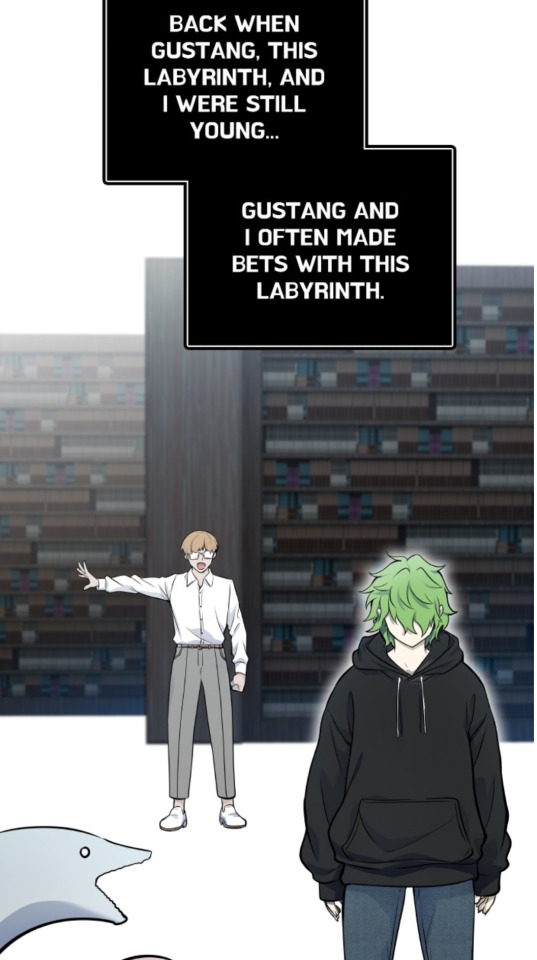
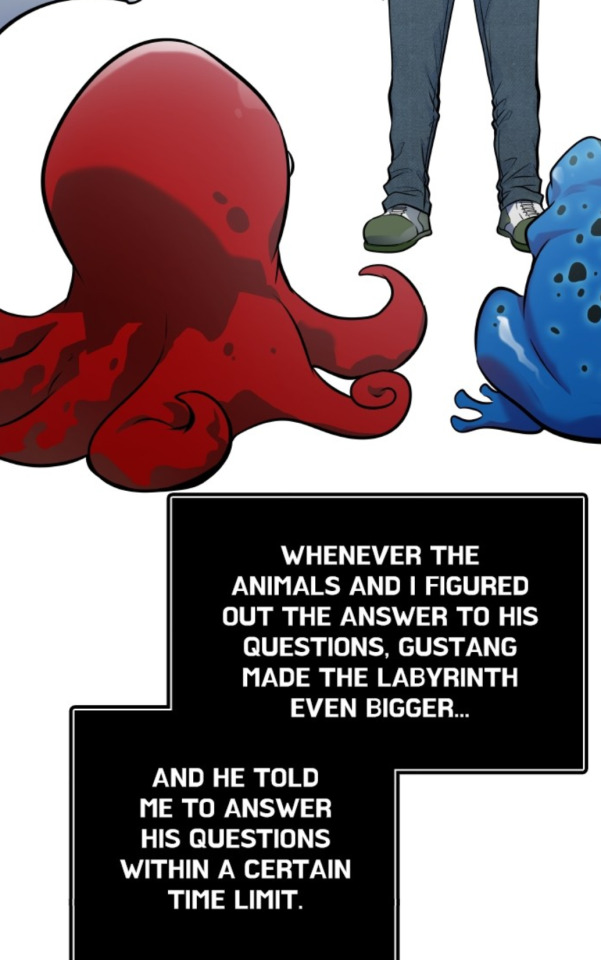
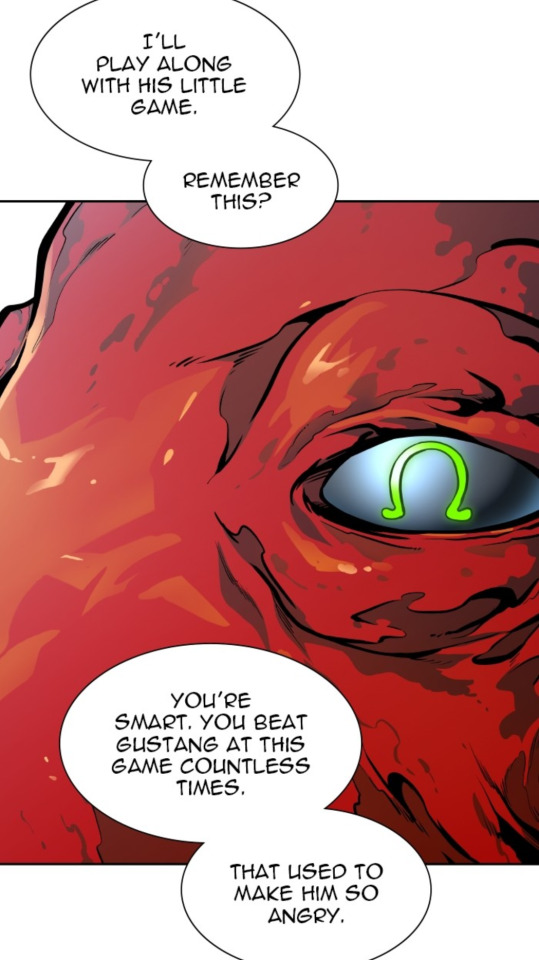
(Tower of God #581)
These challenges appear to have extended beyond Gustang simply throwing Traumerei into his labyrinth of books (who, to be fair, seemed to have taken a certain measure of delight in provoking Gustang's temper by beating his challenges) to matches of chess, which are suggested to have been Traumerei's expertise and version of these challenges:
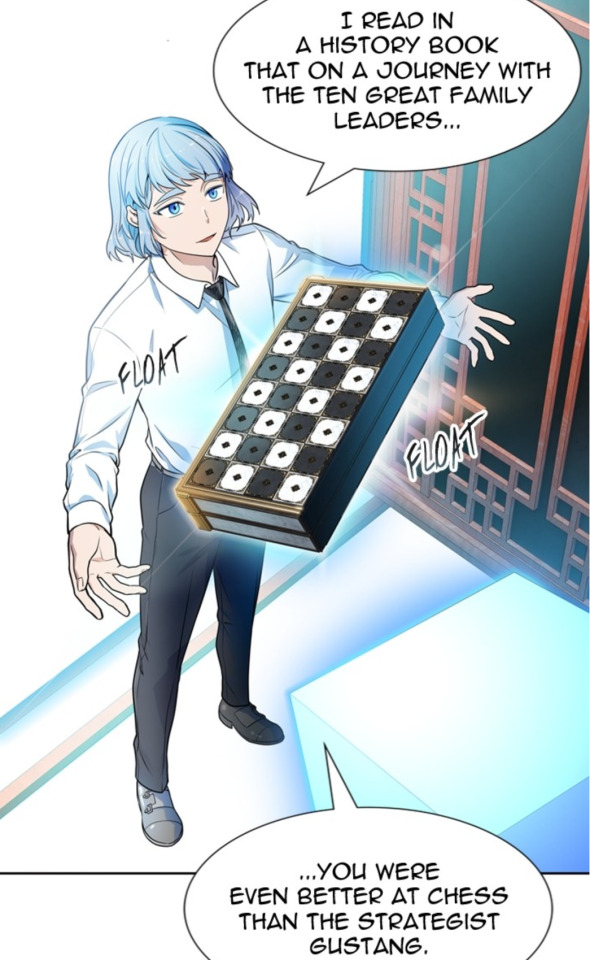

(Tower of God #572)
The instances of sarcastic banter and insults between them exceed the necessity for screenshots (and my willingness to run up against the iimage limit for this post, since I'll still need to get to Traumerei and everyone else), as omnipresent they are in nearly every single interaction between those two.
It's clear that the primary sentiment in this relationship was of the "tough love" kind, with Gustang not mincing words and Traumerei responding in kind, fuelled by an underlying sense of comradery. We see this when Traumerei arguably considered Gustang as one of his primary friends back in said stage of their climb already (alongside Zahard)*:
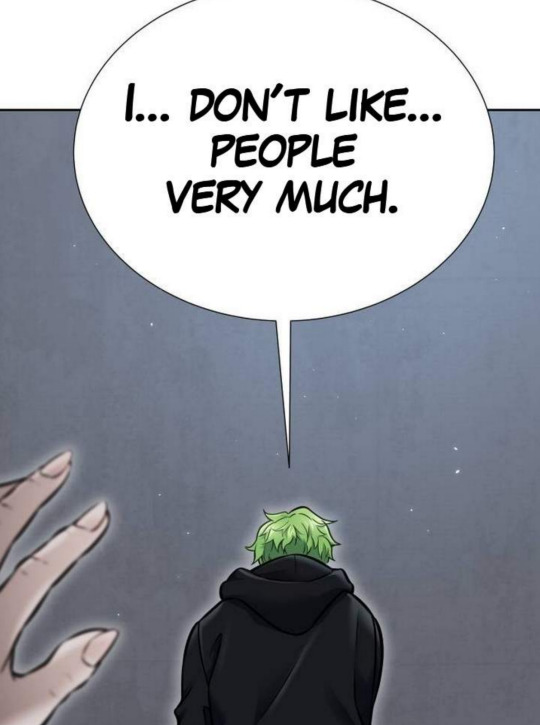

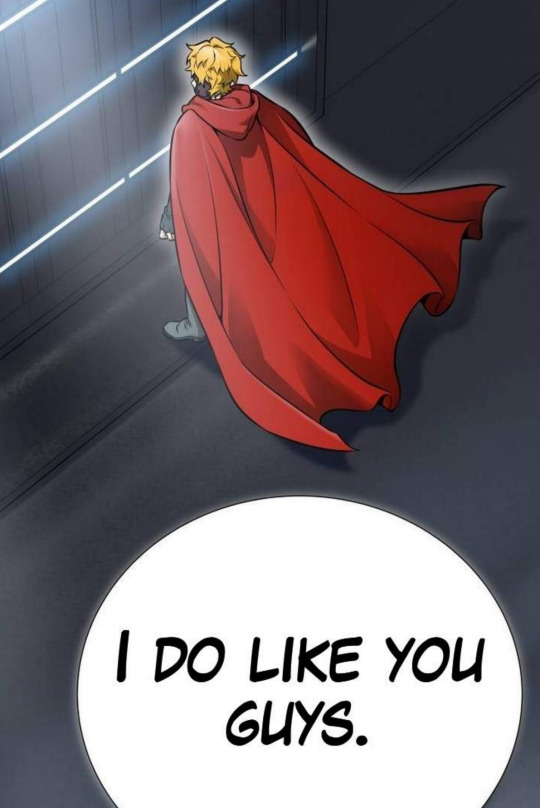

(Tower of God #631)
Where their relationship started to break down for certain though was around the time of the betrayal of many of their initial supporters upon closing the gate to the 135th floor, which I've talked about before and the impact upon Traumerei's mindset specifically of which cannot be overstated (see #620).
As we learn in #630, a part of these "most beastly atrocities" was the murder of dozens upon dozens, if not all, of the Shinheu that weren't introduced as the seven specifically in Traumerei's arsenal in the present day plot. Traumerei laments this as underserved cruelty against not only innocents but children who "helped us all this time" and exclaims his desire for vengeance, to which Gustang basically tells him to give up on that due to its pointlessness:
"That is not possible, Traumerei. This Tower is immensely vast. No matter how many of them we round up and burn, they will reappear again and again, and if we get rid of them everytime, we will become very lonely beings." (Gustang, #630)
To which Traumerei replies:
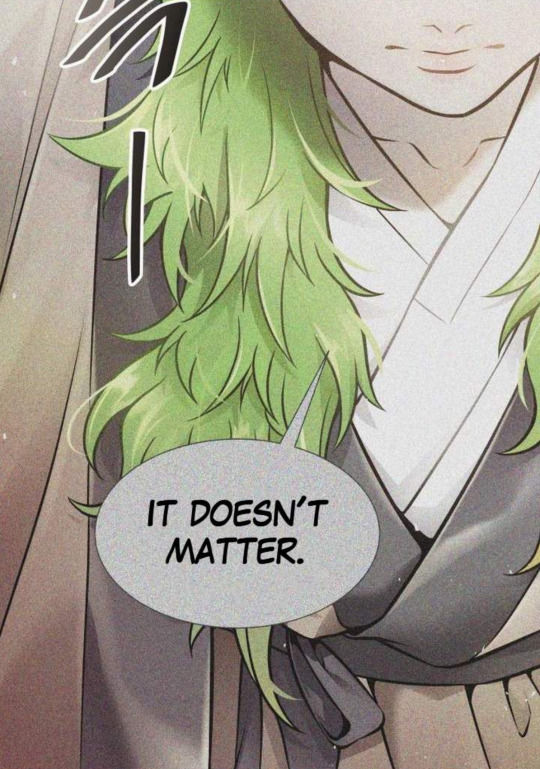

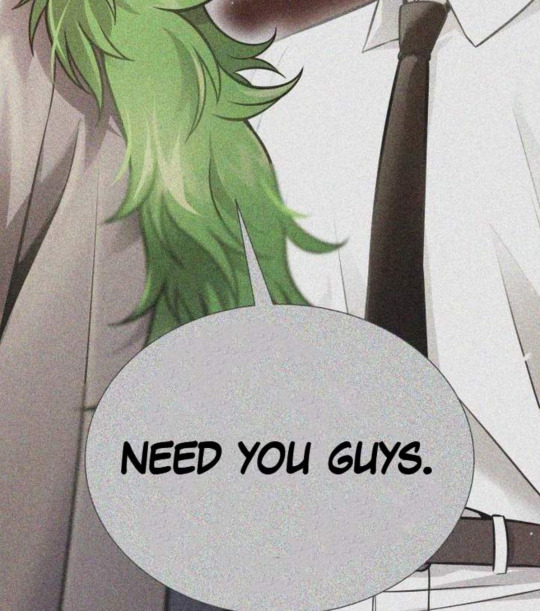

"So...Let's burn everything else. When we're strong enough to disconnect from everyone else in the Tower. Never again. Never again. Will I doubt again."
(Traumerei, #630)
(During this speech, we see Traumerei start to take his deceased Shinheuh into the shinsu black hole sphere that would eventually become "All Creatures.")
Whereas most of Gustang's other blunt or snide comments were friendly banter, this attempted reality check and what he likely thought was genuine practical advice concerned a matter far more deep-seated and difficult, revealing a deep and going by the present day story, lasting, divide in opinion on the matter. While we obviously still lack many part of the story and a complete timeline, I think it's likely that it was at this point that the Gustang and Traumerei relationship began to grow more distant, whereas Zahard and Traumerei started their close collaboration (additional reasons for which will come up in the analysis of Zahard and Traumerei's relationship and development thereof).
(as a necessary aside, just a few chapters later we learn that Traumerei started to engage in necromancy early on during their climb, to bind deceased shinheu's souls to their body as if they were still alive. I feel like I have to bring this up preemptively in order to make clear that this in no way makes what happens to Traumerei's Shinheuh in #630 less impactful to him or genuinely horrible, since it's not like Traumerei went around purposefully killing his Shinheuh to turn them into undead weapons. Rather, it was precisely because he refused to/couldn't bear to lose them that he clung to something like necromancy in the first place, as an emergency solution. He is genuinely griefed and enraged by their deaths precisely because he'd rather have them fully alive than as living corpses)
This flashback from Traumerei's POV leads up to the sharp contrast of it to his present day sentiments towards Gustang (who, to be fair, has consistently been the one gunning for a fight and a "rift" that could no longer be ignored):
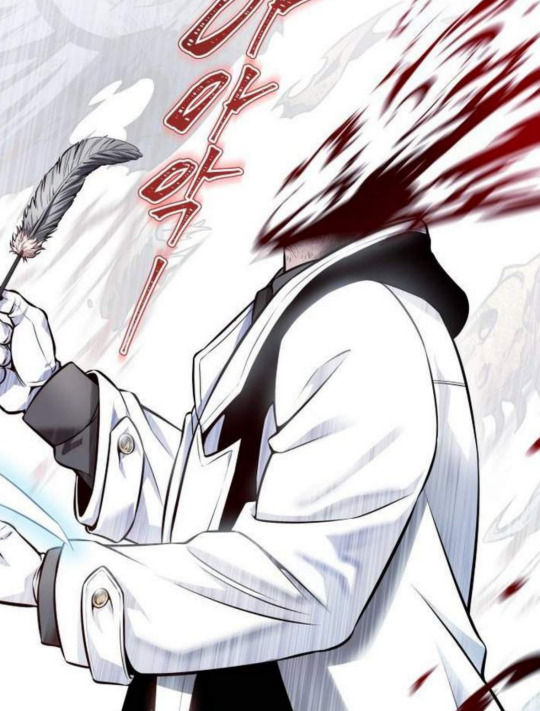
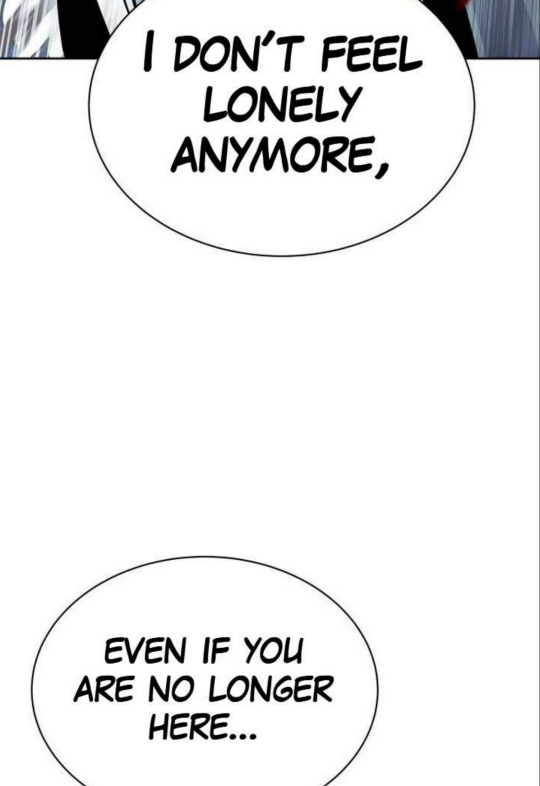
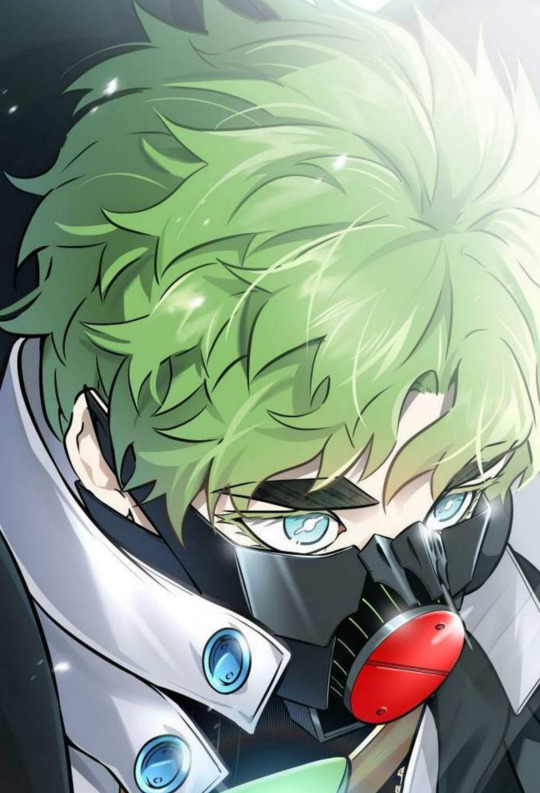
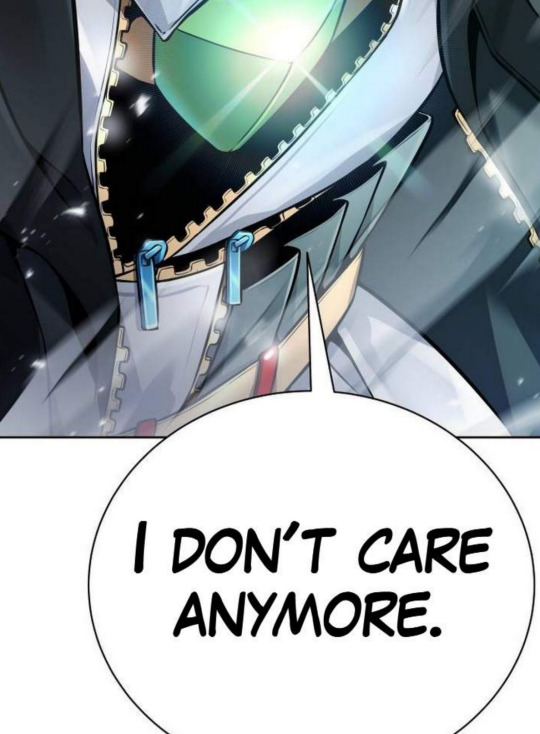

(Tower of God #630, and yikes)
I will be coming back to the Gustang relationship in the next part occasionally, but will end the specific segment on it here, since I don't want to make this purely a Gustang centric analysis.
The short of it is that Traumerei and Gustang started out as more or less friendly rivals who were nonetheless genuinely close friends underneath it, trading friendly ribbing and blunt "tough love"from Gustang towards Traumerei, until it wasn't enough anymore to bridge the increasing emotional gap between them and their respective perspectives. We still see similar banter in the present day, and Traumerei does not want to believe that Gustang is serious about what he likely considers a pointless mid-life crisis induced by people they had already decided to emotionally disregard long ago to the point of turning against his GW comrades. But once Gustang makes clear that he will not be deterred, Traumerei responds in kind and declares their former emotional connection fully severed.
2.2 Traumerei and the Family Heads
So, Traumerei and the other Family Hands. In this instance, specifically Yirang and Edahn, with a recurring smidgeon of Gustang (Hon does appear in the Enkidu flashback as well, but is also just kind of there. I think he and Traumerei are comfortable existing next to each other but not close in the sense of talking a whole lot, given that we don't see them talk or even stand next to each other even once the whole ordeal and Hon was happy enough to let an intruder into Traumerei's new house, so who can say)
Reddit user azebod already put it more succintly than I will be able to when they point out the impression of something almost infantilizing in the Family Heads (that we've seen so far) treatment of Traumerei. Traumerei is a bit of a dunce, he is someone other people get praised for putting up with, he is emotionally fragile, he needs to be treated with kid's gloves whenever in the middle of a pout. Which is maybe somewhat exaggeratedly put by me (though not wholly incorrect at its core), but the common denominator in opinions of Traumerei definitely are that he's a bit of a weirdo with lacking social skills and resulting troubles of establishing or maintaining genuine relationships with other people, whom his old friends are happy to help, which is great, except for the part where this reveals a genuine ignorance of Traumerei's full character, capabilities, emotional state, and motivations, contributing to the flashbacks bloody conclusion.
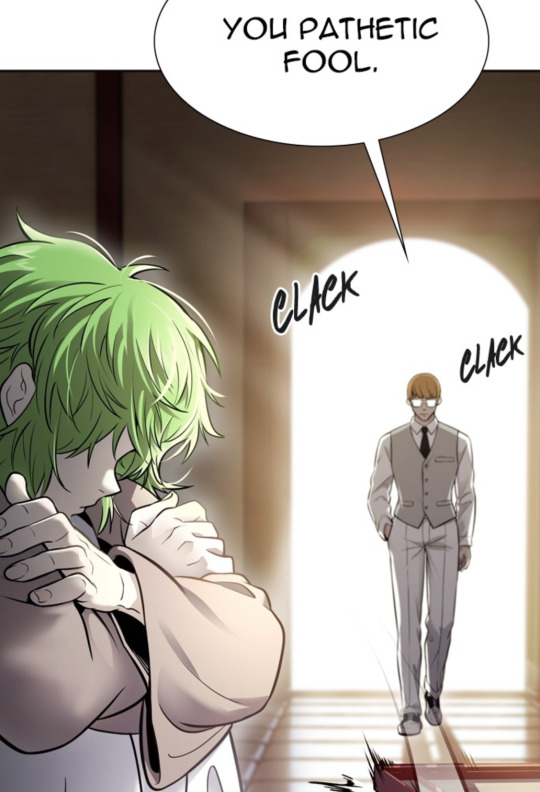

Some tough love from Gustang, and a not inaccurate assesment, but one we see repeat itself displayed in a lesser extent (and less openly stated) by the other Family Heads:
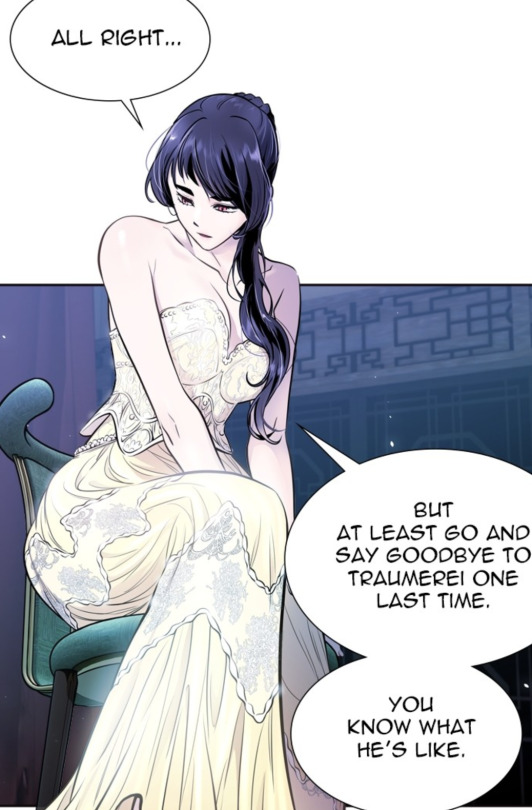

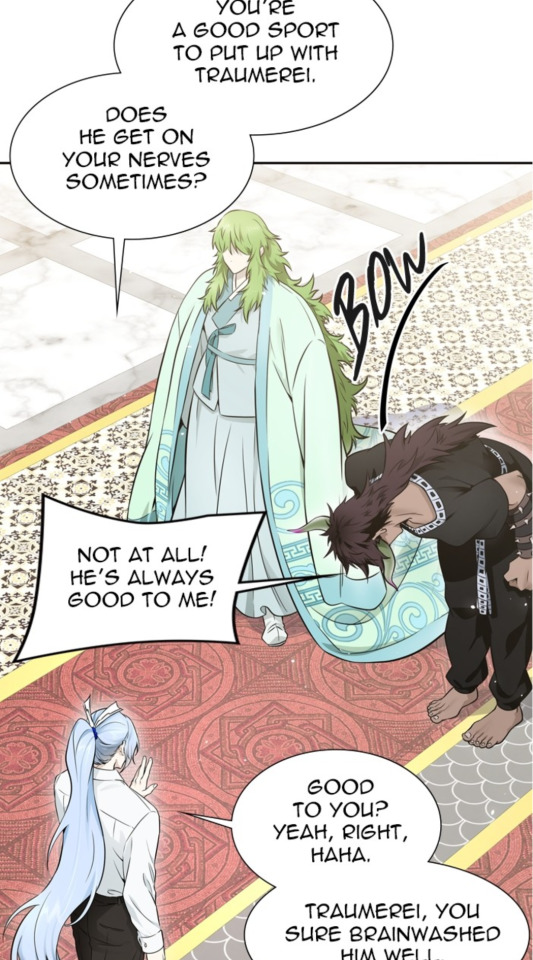
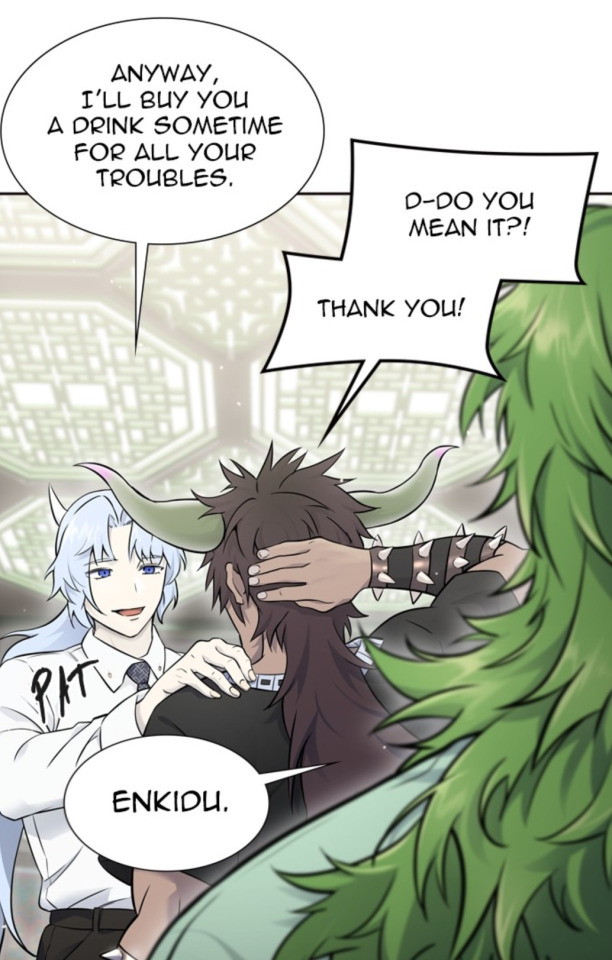
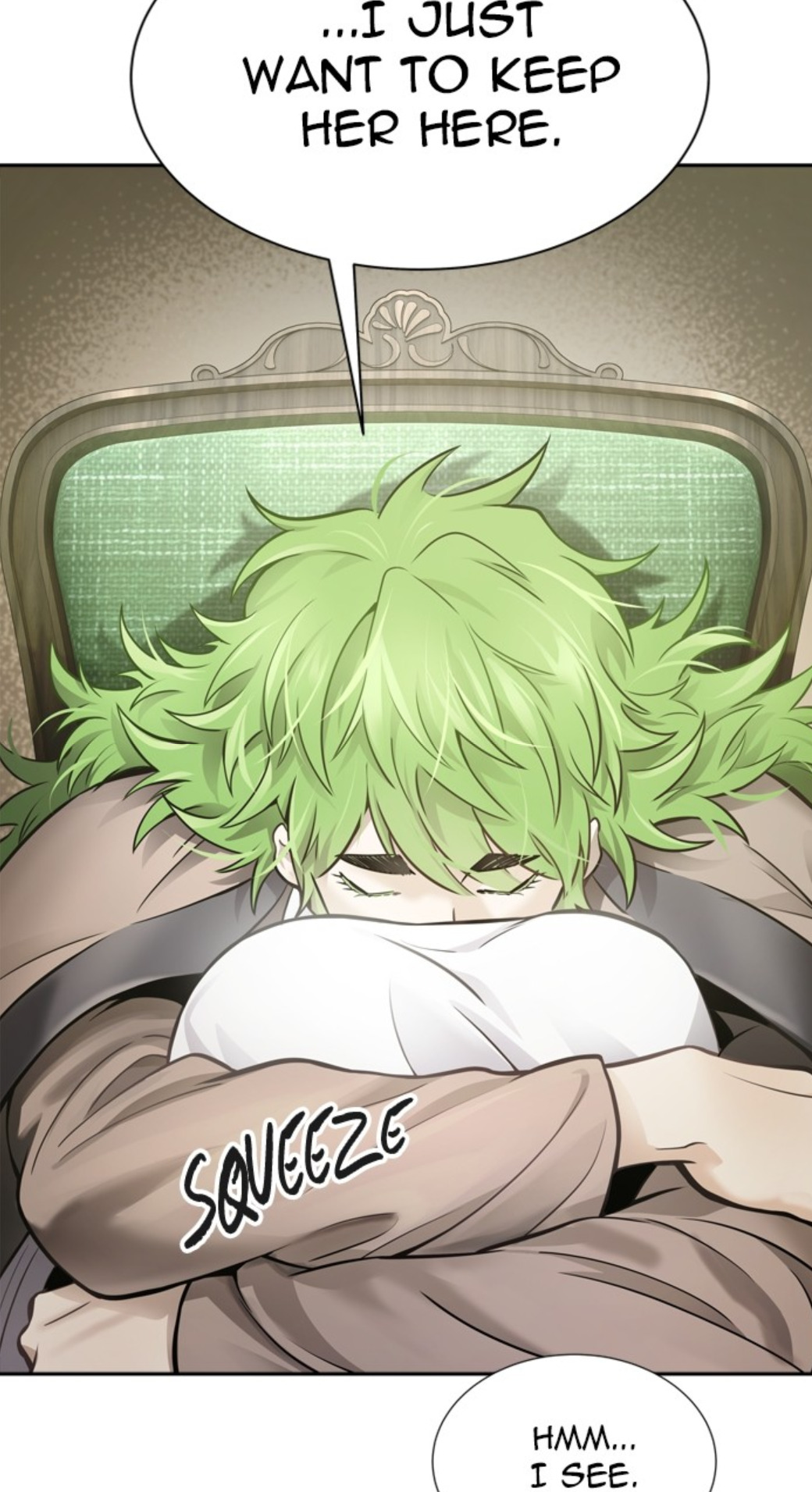

(Tower of God #618 and #619)
I'm not claiming that this means they do not care for Traumerei, after all it's precisely due to said care for him that they exhibit this behaviour: friendly heckling, looking out for his emotional well-being etc. They're good friends, they're looking out for him (and taking into consideration the flashback of #631, may well have been founded on guilt for having Traumerei be the one to shoulder the earliest version of the trolley problem in their climb)!
But rather that there is still this commonality of considering Traumerei borderline unable to get by without said help, and so this "shielding" of sorts not only helps to keep Traumerei's emotional development stunted but also prevents them from truly connecting with Traumerei on a deeper emotional level (which is exactly what we see happen with Zahard instead).
I also can't helpt but feel like this sort of attitude may have contributed to Traumerei's intentions of making his betrothal to Amizu a very public event, almost demonstrative in nature. "See, I can seal a honest relationship by my own efforts afterall", when he explicitly states that he hates parties and previously mentioned that he didn't mind not seeing the other GW's 24/7 anymore and was doing just fine on his own:

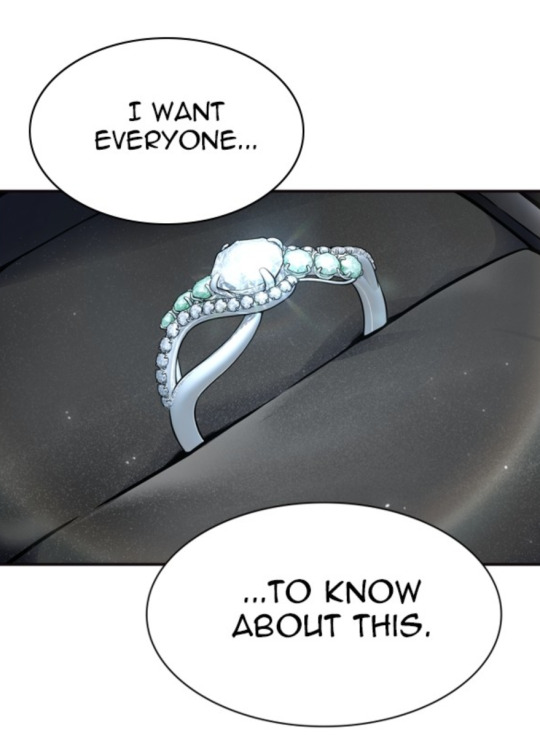
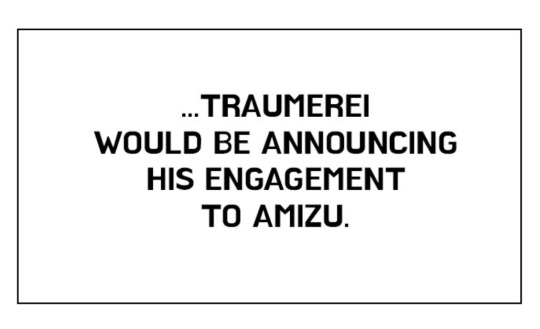

(Tower of God #617)
(Which is all the more funny because it stands in direct contrast to his disappointment about Zahard declining to attend. But we'll get there in the next and hopefully final part, not least because I've reached the image limit per post)
The main points to draw from this segment: Traumerei and Gustang used to have a well - established friendly rivalry based on solid comradery but gre distant at the very latest after their differing responses to the violent backlash against their choice to seal the gate to the 135th floor, culminating in their present day conflict, in which Traumerei, after all his promptings towards Gustang yield no relenting, decides to put aside their former friendship for good and go for the kill (whereas Gustang, in something I didn't include in the post, his perspective, wants to correct the distorted "false history" created by him and his comrades, act hin his role as team "judge" and overcome his current ignorance of the truth about key choices and events in the past, perpetuated not least of all by Traumerei himself).
Traumerei and the other Family Heads have a friendly if more distant relationship, with less of a demonstrated/established rapport between them than Traumerei and Gustang in particular. They joke around with him and look out for him, but both do so in a way that is rather blaseé at times, however well-meaning, and also consider him not fully able to cope by himself in the first place, and make this opinion known in various ways and severities. In turn they are unable or unwilling to fully emotionally connect with Traumerei or establish a full (or at least fuller) understanding of Traumerei's "true" character and capabilities (both in the positive and negative sense. Another point to potentially add here would be Gustang talking down Traumerei's highly lethal shinsu control skill, though in the present day he does acknowledge its dangers).
Something that, as previously mentioned, I believe to stand in sharp contrast to what we've been shown about Traumerei and Zahard's relationship, with which I will continue in the next part.
*Of course you could theoretically try to argue along the lines of "he was actually super tight with other GW's as well, they just haven't been shown yet!" but let's be honest that there was a reason why SIU chose to specifically put Zahard and Gustang, who also just so happen to be Traumerei's most relevant GW relationships in the plot by far, into this situation and have Traumerei make this declaration of care, conveniently overlaid over exactly those two characters.
Traumerei & Zahard (Pt. 1)

(Tower of God #580)
We're far enough along in Traumerei's character and the depiction of his relationships to other Family Heads now that I feel confident in trying to analyze them a little more in depth, beyond meme edits or brief speculations in the tags of said memes, with a focus on doing this mainly in comparison and contrast to his relationship to Zahard as this posts main focus, highlighted as his most prominent and defining one from well before Traumerei's actual introduction.
Warning: This will include spoilers up to roughly #638 of the Tower of God Webtoon, and in part draw on SIU's blogposts of published chapters of the Hidden Floor arc. Under the cut for length.
My Thesis Statement: The defining aspect of Zahard and Traumerei's relationship, built on a basis of genuine comradery and mutual support between the two, shows Zahard as the only Great Warrior so far who actually expects things from Traumerei (or to paraphrase, who, in however limited a form you want to argue, places his faith in him). We see Zahard confide in him, console him, and entrust vital tasks to him, to the exclusion of all their other comrades; not only as the first comrade Zahard turns to in the present day story (in what's Outside Zahard's technical debut), but also a long way back in the past, before the first war with F.U.G. even broke out.
I'll try to structure this into three segments (and going by the likely amount of screenshots, probably a reblog chain rather than one self - contained post as I had hoped):
Zahard and the Family Heads
Traumerei and the Family Heads
Zahard and Traumerei
1. Zahard and the Family Heads
The first thing I'm going to argue for this purpose is Zahard's sentiments towards his old Irregular companions. Contrary to what seems like a popular opinion in fandom, that the present day Zahard views them as means to an end exclusively, devoid of any kind of positive or emotional sentiment at all, I actually think it's the opposite, and that he would have a far easier time, strategically speaking, if he did view them in this indifferent manner.
1.1 Zahard and Self
I feel like the origin of this perspective of Zahard as a purely cold, ruthless and calculating mastermind stems from his treatment of the Hidden Floor, where he collaborated with his data to first segregate the data of the Great Warriors into the hidden hidden floor, and then delete them.
My main argument against the validity of this would be, first of all, that the recorded data of their past selfs are very much not equivalent to their Outside, real selves, and that it would be perfectly natural for Outside Zahard to not hold the same feelings for them as their "real" versions.
Secondly, I feel like people really overplay the extent to which Zahard manipulated his data self in this: Yes, we have Zahard sport a malicious grin when he reveals data Zahard's ignorance of events on the Outside, and declares him as a "poor thing", "a fake me":

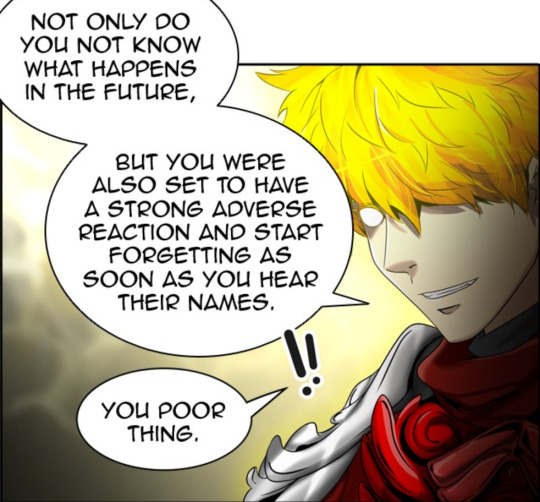

(Tower of God #386)
However, what this scene itself confirms it that 1) data Zahard likely only got forcibly edited (and only regarding these specific memories) when Bam asked him about Arlene, since "their names" is unlikely to refer to Edahn, with whom he converses perfectly fine and in a familiar manner and thus likely to refer exclusively to Arlene and V, who were erased from offcial history on the Outside as well (and whom Zahard likely sometimes wishes he could edit out of his own memories as easily as in data Zahard's case).
This is basically all but confirmed in the beginning of #368:


and 2), that Zahard has a rather nostalgic side, considering that he harboured the wish to leave the remnant of his young and optimistic self in the world in any form at all.
We also get from data Zahard himself that he helped Outside Zahard of his own volition, in a scene that's arguably centered around the Outside Zahard's strong emotions:


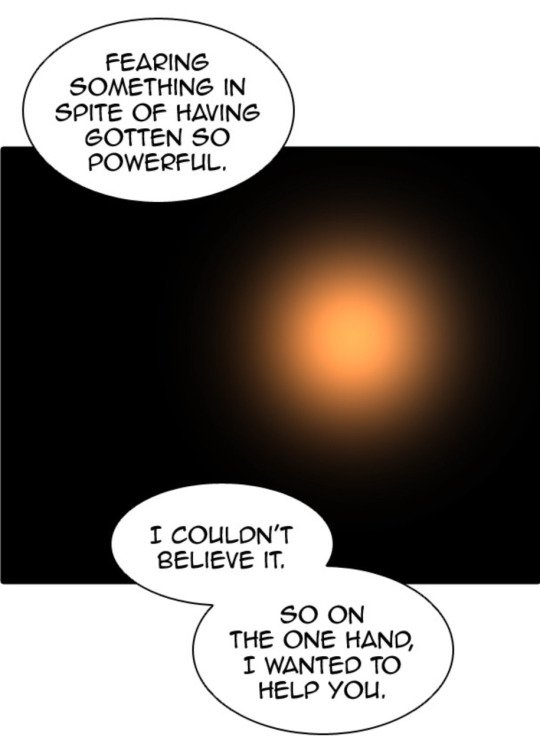

(Tower of God #387)
The emotions in said case being "anxiety" and fear, but still ultimately serving to demonstrate that Zahard is far from limited to the stoic and ice - cold killer we saw in his words to and subsequent treatment of Bam immediately prior, something concluded in his decision to honor his young self's wish for Bam to reawaken his passion as he did for said data self, despite the fact that said data was already in the irrevocable process of being erased from existence, lacking crucial information about Bam and his current Outside self.


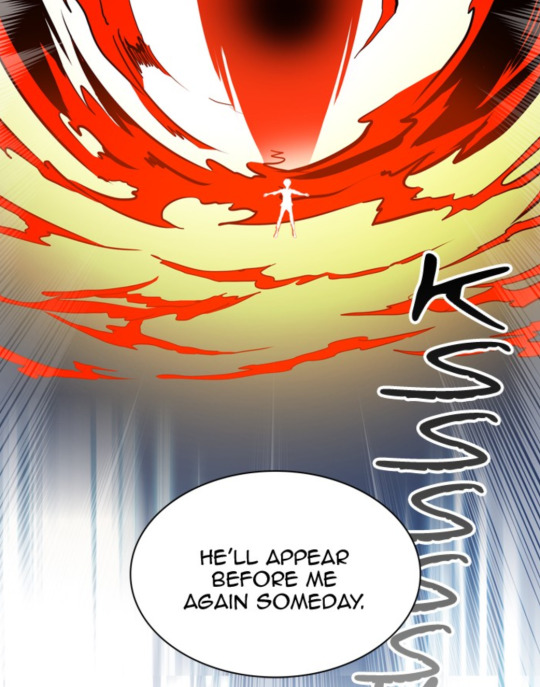
(Tower of God #388)
(Note that this is AFTER Zahard noted "That really is a power that desires the abilities of God" about the Second Thorn Fragment, about whose origin and purpose he would know, as well as a multitude of potentials regarding Bam's origin and "fate". That is not the kind of choice someone robotically calculating the best possible outcomes and most ruthless way to get there would make, much less at the prompting of a soon to be deleted "fake me" he truly held either nothing but contempt or no emotional connection to at all, one he might easily have deleted outright).
Also, I didn't quite know where to bring it up, but I'll also mention that there is no immediate correlation between the data of the Great Warriors entering the "Hidden Hidden Floor" and being automatically deleted. As data Edahn reveals, they were tired of their existence as data, and followed Zahard knowing there might have been something fishy about his mirror from his Outside self. For all we know, they might have been deleted upon explicit request, similar to the data of Yura's and Hwang's bodies mother, somewhat detracting from data and Outside Zahard as ruthless killers and deceivers in that particular matter:

(Tower of God #386)
But all of this has been very centered around Zahard and his interactions with his own past self, so when am I going to get to his relationships to the other Family Heads?
Well, this segment was important in and of itself for getting there, demonstrating that Outside Zahard is not an unfeeling robot but actually fairly sentimental, and will alter his course based on the considerations of people close to him whom he respects (even in ways that are arguably highly disadvantageous to his own continued well-being), even if in this instance said person was a version of himself, which still serves its own purpose of demonstrating a senitmentality regarding his younger days, back when he and his comrades where comparatively unburdened and driven young adults climbing the Tower together.
1. 2 Zahard and the Family Heads

(Blogpost Season 2 Episode 292)
In light of the abovementioned arguments, I don't think Zahard purposefully sawed of all connections to his old comrades because he no longer cared about them, but rather that he still values these relationshop above nearly everything else, and distanced himself because he though that was what was his duty as their leader and a "KIng", about which he developed something of a complex, in case you didn't notice.
Introduced in his data self of course (I promise, we'll leave the Hidden Floor after this one):
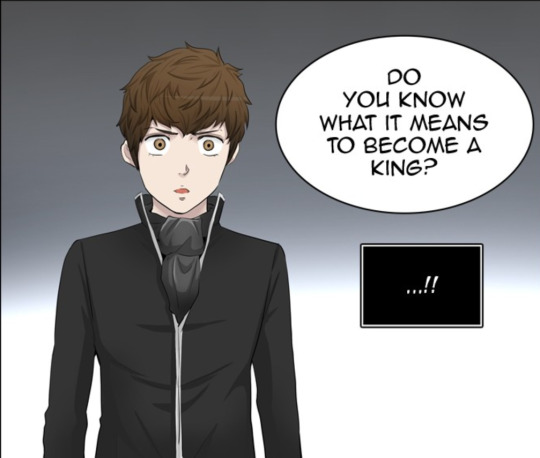
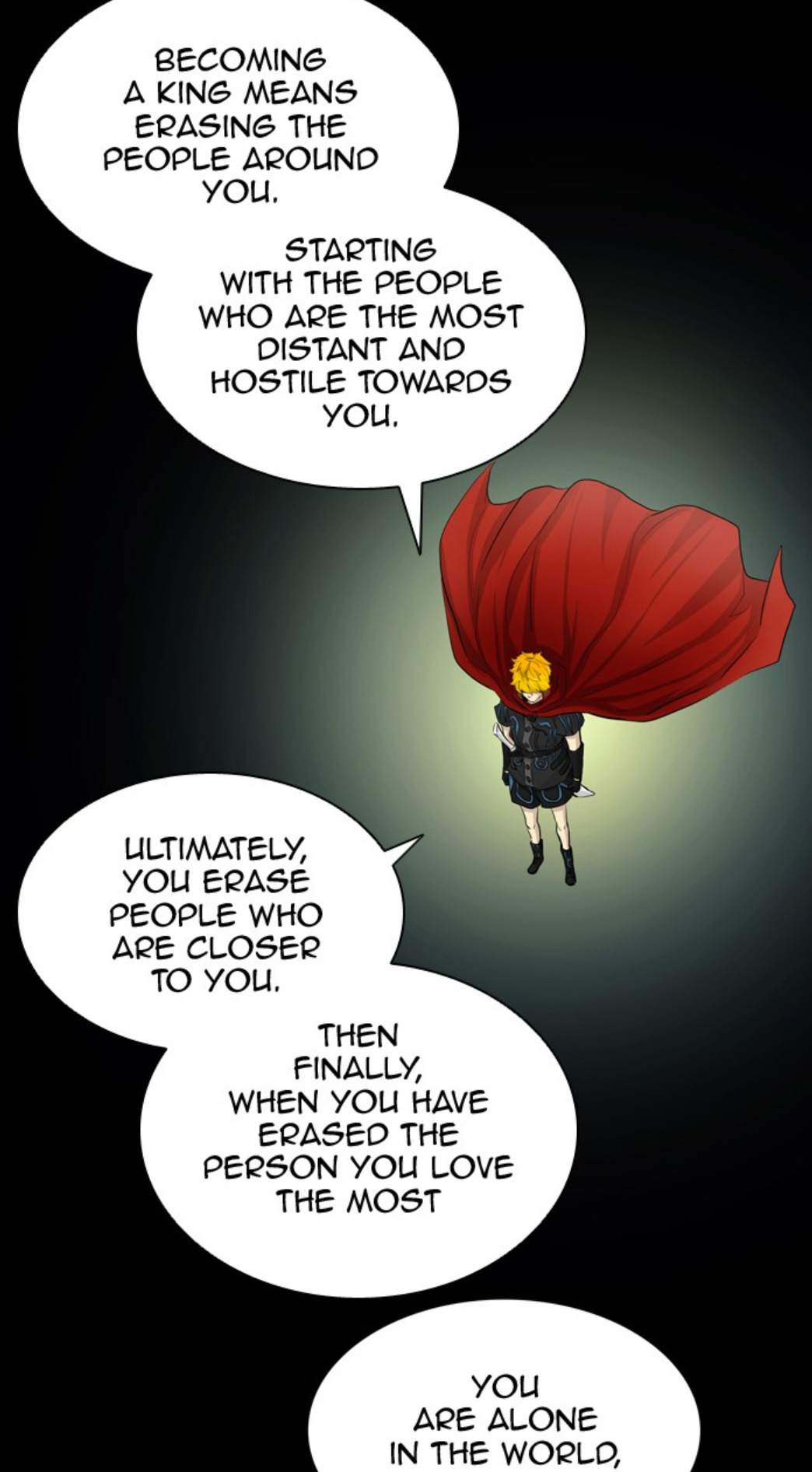

(Tower of God #365)
This mindset smells of Outside Zahard, and comes specifically after Bam mentions Arlene's name, which we have establish to have been one of the primary "triggers" installed into data Zahard. I also feel like the following "What do I look like to you now? A human being? Or a monster?" might reveal another sad aspect of Zahard's current self-image/conception, but I' ll have to restrain myself with the images if I want to be able to at least conclude the Zahard and Family Heads portion in this posts image limit).
In another form, we get this in Traumerei's (but truly, Enkidu's and Gustang's) recent flashback arc, specifically #618:

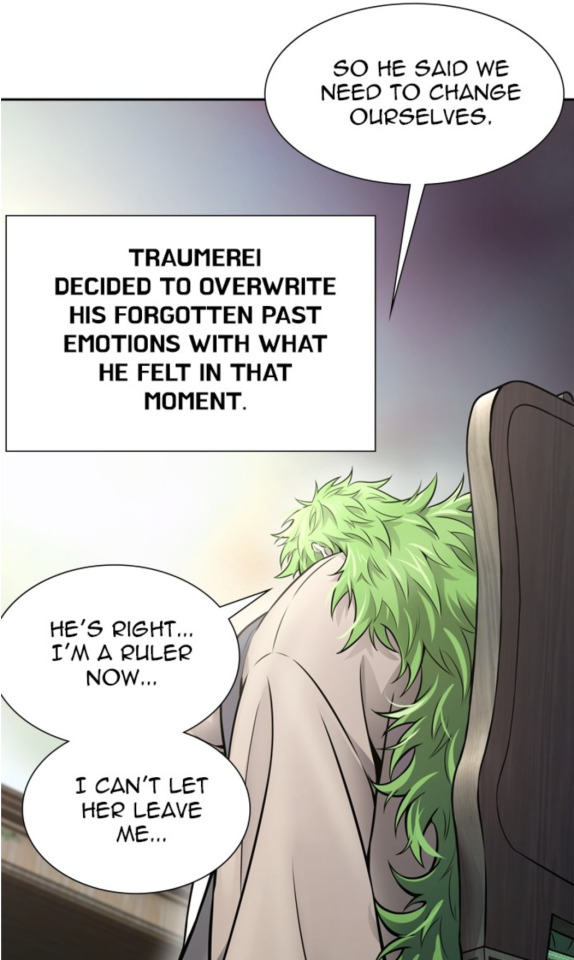
But since I'll have to save many of these more recent points for Traumerei's portion of the post lest I needlessly repeat myself, I think it's enough to conclude this with the observation that at least part of what drove Zahard to change his mindset and become the solitary figure he is in the present day story was a feeling of responsibilty, acting according to their stations, soaring far above anyone else in the Tower, an expectation he extended to his comrades.
As Kallavan said, With Great Power comes Great Responsibility, and all that:

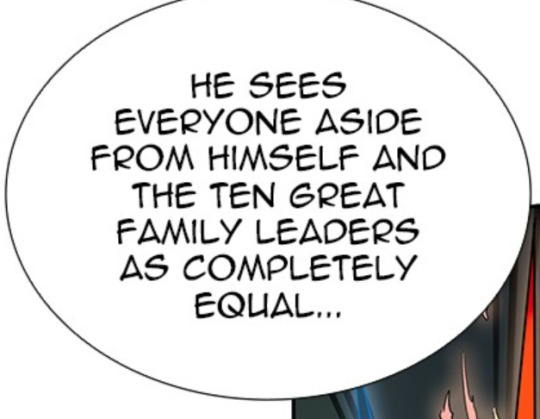
(Tower of God #477)
And we do see Zahard explicitly consider the Family Heads in the big decisions/doesn't simply overrule them, such as involving Bam:
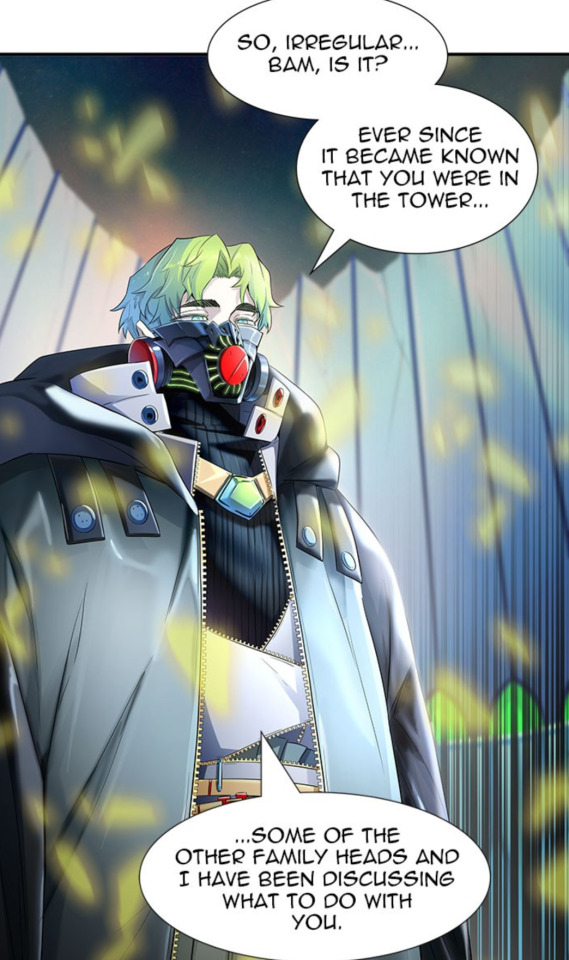

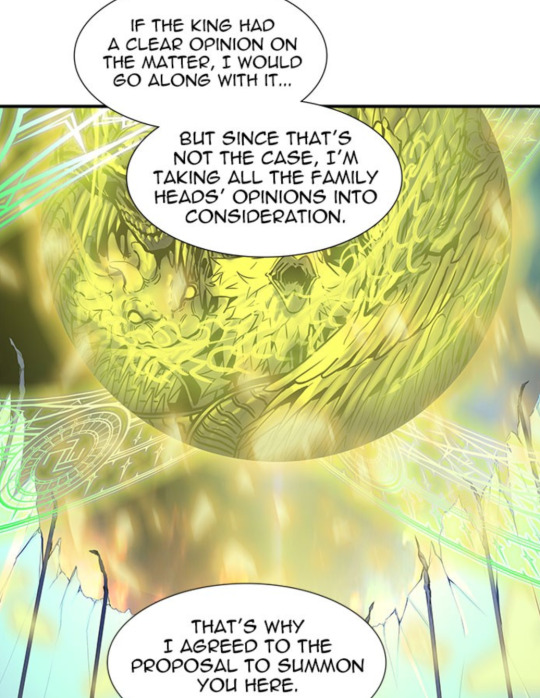
(Tower of God #539)
We as readers know that Zahard and Traumerei had their private conversation prior to the Nest that probably truly determined what happened wrt Bam, but if anything this just strengthens my point, since Zahard explicitly allowed Traumerei to do as he wished.
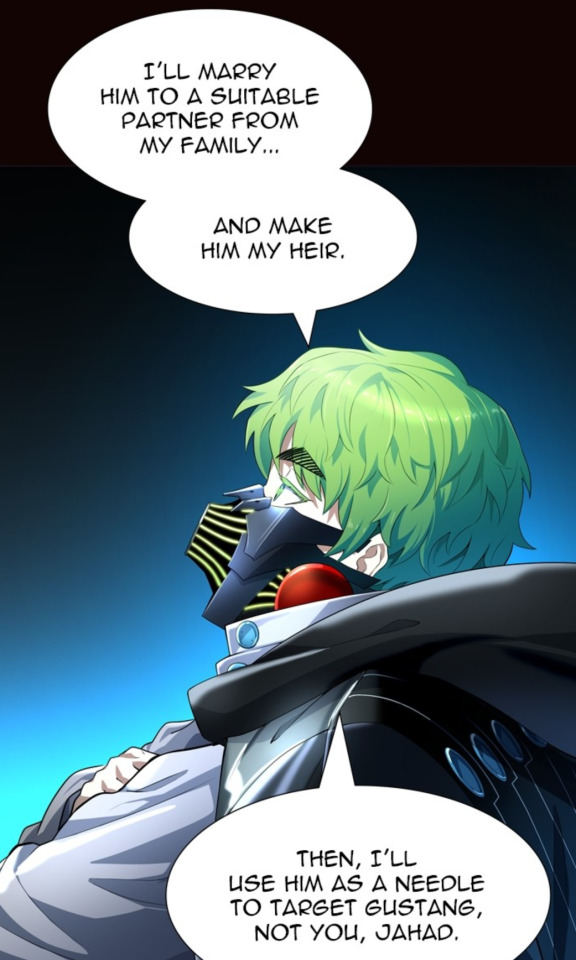

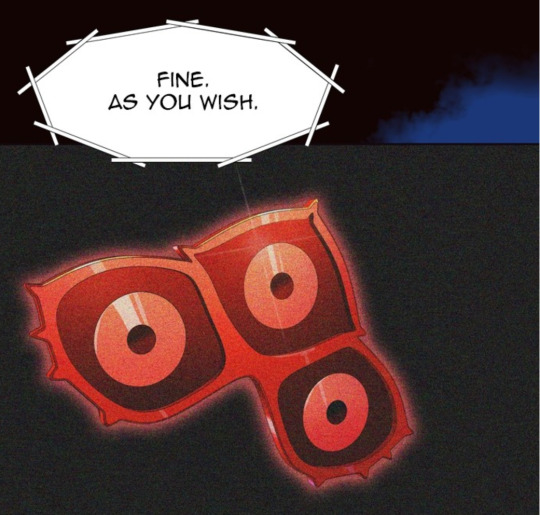
(Tower of God #551)
(The reason I included the panel with Zahard's reaction is that I find it very interesting and important to the point I'm making. I don't have a conclusive opinion, but to me he appears almost taken aback by Traumerei's answer. Because remember, Traumerei's answer here is his reveal of the "condition" under which he'd take up Zahard's proxy war against the Poe Bideau family. That's quite a selfless "condition", or at the least purpose for said condition, to place, so I might well imagine that Zahard was taken aback by the lengths Traumerei would go to, specifically for him. Even in a more cynical reading, this is still Zahard allowing Traumerei to recruit himself a second Irregular into his family (the one he may know is considered as destined to kill him) and therefore also showing a certain degree of trust wrt that. But more on their relationship in particular in the eventual concluding part of this post)
Last but not least (arguably the opposite), we also have what may be the implication of Zahard as the one who gave the Great Warriors access to their famous Imortality Contracts, or at the very least having done something to make Traumerei regard him as the main cause behind their current positions and perpetual longevity of said positions:
"From the moment we got to the top, the only choice we had was to fall or not. But Zahard has given us a way to avoid falling forever. Only now that we have defied the laws of the Tower have we become beings who will never fall."
(Traumerei, Tower of God #632)
So while I'll certainly agree that we don't have many direct interactions between Zahard and the Family Heads, he does leave them free room to act with the only stipulation basically not to declare war on him, and doesn't brute force his own choices over theirs. He is very lenient (so far) even in regards to the Family Head who has broken this one rule, and has shown considerable respect for Traumerei's opinions and plans. Furthermore, he may well have ensured or enabled the Family Heads current hax, for which I would find it difficult to see another reason than wanting to keep them with him.
While there is a very interesting conversation to be had about Zahard and Gustang (and whether Zahard was aware of Gustang's preservation of the Thorn and Floor of Death all the way back or not), it's worth pointing out that Zahard's order to destroy Gustang's family (something we now know Gustang himself desires) only occured as part of his three orders, and Gustang himself is not targeted by default.
Basically, I haven't seen anything so far that convinced me of the "Zahard doesn't care about the Family Heads anymore" stance.
And with that out of the way, I'll move on to Traumerei's relationships to the other Family Heads depicted so far (who thankfully does have some more actual interactions with them).
(And again, a point I didn't know where else to fit in in which only occured to me towards the end of this post: I do think it's noteworthy that Outside Zahard does adress data Edahn as a avalid representation of Outside Edahn, to the point of not considering that he may hold differing sentiments from Outside Edahn wrt his relationship with data Zahard. Which goes against one of my first points, that Zahard may have drawn a sharp line between the datas and Outside selves, but supports my main points even better:

(Tower of God #386))
28 notes
·
View notes
Photo
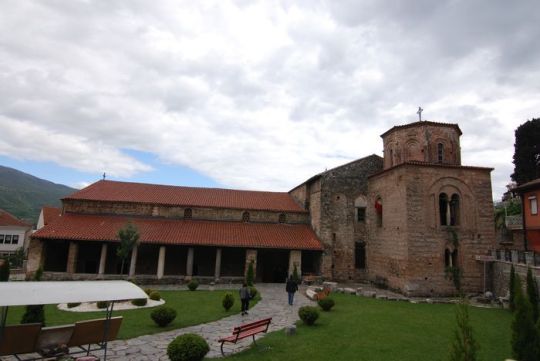
When Romulus was briefly on the throne
Emperors had lived from time to time in Rome as late as the 470s, when Romulus was briefly on the throne, but in 500 there came a grand visit like nothing seen since Theodosius more than a century before. Only twice after that date would empire revisit its cradle, for consular games in 519 and for a brief stopover in 663. When Charlemagne arrived to have himself crowned emperor in 800, his business was inventing the new while pretending to cherish the old, and the medieval emperors who followed knew they were foreigners and usurpers in the city of Romulus and Augustus.
To the naked eye, Rome was Rome as it had always been; to the historical eye, change was everywhere, and continual. The Rome of Augustus had acquired, in the third and fourth centuries, sturdy new perimeter defense walls towering forty or fifty feet over everyone from imperial dignitaries seeking a grand entrance to farmers bringing produce to market. Fourth-century sources let us count the visible monuments of the city: twenty-eight libraries, six obelisks, eight bridges, eleven forums, ten basilicas, eleven public baths, eighteen aqueducts, nine circuses and theaters, two triumphal columns, fifteen fountains, twenty-two equestrian statues, eighty golden statues, twenty-four ivory statues, thirty-six triumphal arches, and the more pedestrian necessities as well: 290 granaries and warehouses, 856 private baths, 254 bakeries, and 46 brothels.
Christians and traditionalists alike
Even when Constantine took to Christianity after 312 CE, Christians and traditionalists alike were reluctant to introduce church architecture into the city’s historic core. Traditionalists feared the intrusion, Christians the contamination of proximity to the ancient gods. So the great early Christian basilicas stood guard around the core: for example, Saint Peter’s shrine on the Vatican hill across the Tiber from the walled city proper; or the church of the Holy Cross, just inside city gates on the east side of town; or the basilica of Saint Paul, some little way outside the walls to the south. In 391, Theodosius had solidified seventy-five years of increasing suppression of the old religious rites by banning sacrifice and public performance of religious cult activities.
With that, the great temples in the forums and on the Capitoline and Palatine hills fell silent, protected only by the superstitions of new and old believers alike who prudently feared offending the old gods gratuitously. Churches began to edge closer to the center of the city during the fifth century. The basilica of Santa Sabina took high ground on the Aventine to the south, where Juno, Isis, and Diana had once prevailed; and Great Saint Mary’s (Santa Maria Maggiore) stood on the Esquiline north of the forums.
Closer to the center the churching of Rome would come, with Pope Felix IV in the 520s transforming the city prefect’s great audience hall on the Via Sacra, a few dozen yards from the original forum, into a church honoring saints Cosmas and Damian. Eventually, in the 630 s, Pope Honorius consecrated the senate house itself as a church in honor of a martyr who bore an emperor’s name—Saint Hadrian, of the early fourth century. By 500, the bishop of Rome had his own church of Saint John Lateran, inside the city but nearly against the walls, at the end of the Caelian on the southeast side. By the time of Pope Gregory’s reign in the 590s, at least half a dozen smaller churches had been erected stoletov bulgaria tours.
Just what condition the city was in around 500 is harder to say. We have, from the early years of the sixth century, a small spate of texts deploring dilapidation at Rome and elsewhere, and directing renovations and repairs. Rome’s most imperial symbol, the imperial palace on the Palatine hill, was restored; the senate house and, as we will see, the theater of Pompey were repaired; and walls, aqueducts, and granaries were all variously attended to. Within the city, the population’s decline probably revealed itself in the way people contracted together to live in some areas, leaving others to become the so-called disabitato of the middle ages, those tracts of the ancient city that became cattle pastures. Maintaining the aqueducts that brought fresh water from the hills was expensive and difficult, especially as demand fell. When we hear a sixth-century ruler’s outrage that farmers were diverting some of the aqueduct water for mills and irrigation, the outrage is mainly for show; the water was more useful in the fields by now.
0 notes
Photo
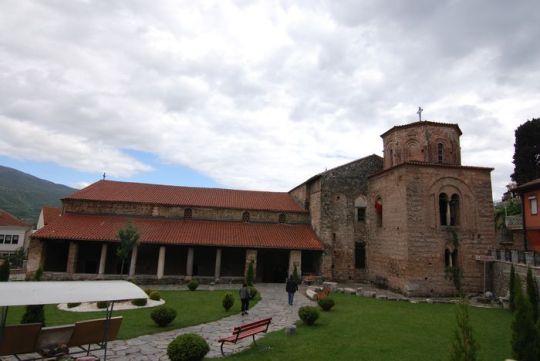
When Romulus was briefly on the throne
Emperors had lived from time to time in Rome as late as the 470s, when Romulus was briefly on the throne, but in 500 there came a grand visit like nothing seen since Theodosius more than a century before. Only twice after that date would empire revisit its cradle, for consular games in 519 and for a brief stopover in 663. When Charlemagne arrived to have himself crowned emperor in 800, his business was inventing the new while pretending to cherish the old, and the medieval emperors who followed knew they were foreigners and usurpers in the city of Romulus and Augustus.
To the naked eye, Rome was Rome as it had always been; to the historical eye, change was everywhere, and continual. The Rome of Augustus had acquired, in the third and fourth centuries, sturdy new perimeter defense walls towering forty or fifty feet over everyone from imperial dignitaries seeking a grand entrance to farmers bringing produce to market. Fourth-century sources let us count the visible monuments of the city: twenty-eight libraries, six obelisks, eight bridges, eleven forums, ten basilicas, eleven public baths, eighteen aqueducts, nine circuses and theaters, two triumphal columns, fifteen fountains, twenty-two equestrian statues, eighty golden statues, twenty-four ivory statues, thirty-six triumphal arches, and the more pedestrian necessities as well: 290 granaries and warehouses, 856 private baths, 254 bakeries, and 46 brothels.
Christians and traditionalists alike
Even when Constantine took to Christianity after 312 CE, Christians and traditionalists alike were reluctant to introduce church architecture into the city’s historic core. Traditionalists feared the intrusion, Christians the contamination of proximity to the ancient gods. So the great early Christian basilicas stood guard around the core: for example, Saint Peter’s shrine on the Vatican hill across the Tiber from the walled city proper; or the church of the Holy Cross, just inside city gates on the east side of town; or the basilica of Saint Paul, some little way outside the walls to the south. In 391, Theodosius had solidified seventy-five years of increasing suppression of the old religious rites by banning sacrifice and public performance of religious cult activities.
With that, the great temples in the forums and on the Capitoline and Palatine hills fell silent, protected only by the superstitions of new and old believers alike who prudently feared offending the old gods gratuitously. Churches began to edge closer to the center of the city during the fifth century. The basilica of Santa Sabina took high ground on the Aventine to the south, where Juno, Isis, and Diana had once prevailed; and Great Saint Mary’s (Santa Maria Maggiore) stood on the Esquiline north of the forums.
Closer to the center the churching of Rome would come, with Pope Felix IV in the 520s transforming the city prefect’s great audience hall on the Via Sacra, a few dozen yards from the original forum, into a church honoring saints Cosmas and Damian. Eventually, in the 630 s, Pope Honorius consecrated the senate house itself as a church in honor of a martyr who bore an emperor’s name—Saint Hadrian, of the early fourth century. By 500, the bishop of Rome had his own church of Saint John Lateran, inside the city but nearly against the walls, at the end of the Caelian on the southeast side. By the time of Pope Gregory’s reign in the 590s, at least half a dozen smaller churches had been erected stoletov bulgaria tours.
Just what condition the city was in around 500 is harder to say. We have, from the early years of the sixth century, a small spate of texts deploring dilapidation at Rome and elsewhere, and directing renovations and repairs. Rome’s most imperial symbol, the imperial palace on the Palatine hill, was restored; the senate house and, as we will see, the theater of Pompey were repaired; and walls, aqueducts, and granaries were all variously attended to. Within the city, the population’s decline probably revealed itself in the way people contracted together to live in some areas, leaving others to become the so-called disabitato of the middle ages, those tracts of the ancient city that became cattle pastures. Maintaining the aqueducts that brought fresh water from the hills was expensive and difficult, especially as demand fell. When we hear a sixth-century ruler’s outrage that farmers were diverting some of the aqueduct water for mills and irrigation, the outrage is mainly for show; the water was more useful in the fields by now.
0 notes
Photo
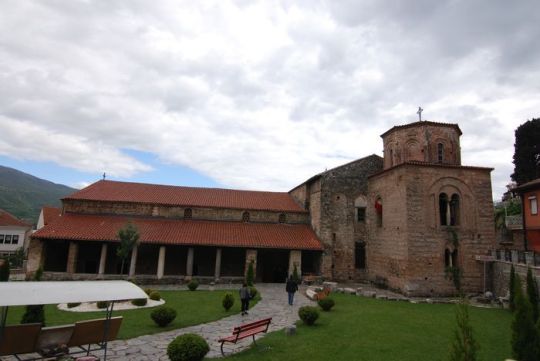
When Romulus was briefly on the throne
Emperors had lived from time to time in Rome as late as the 470s, when Romulus was briefly on the throne, but in 500 there came a grand visit like nothing seen since Theodosius more than a century before. Only twice after that date would empire revisit its cradle, for consular games in 519 and for a brief stopover in 663. When Charlemagne arrived to have himself crowned emperor in 800, his business was inventing the new while pretending to cherish the old, and the medieval emperors who followed knew they were foreigners and usurpers in the city of Romulus and Augustus.
To the naked eye, Rome was Rome as it had always been; to the historical eye, change was everywhere, and continual. The Rome of Augustus had acquired, in the third and fourth centuries, sturdy new perimeter defense walls towering forty or fifty feet over everyone from imperial dignitaries seeking a grand entrance to farmers bringing produce to market. Fourth-century sources let us count the visible monuments of the city: twenty-eight libraries, six obelisks, eight bridges, eleven forums, ten basilicas, eleven public baths, eighteen aqueducts, nine circuses and theaters, two triumphal columns, fifteen fountains, twenty-two equestrian statues, eighty golden statues, twenty-four ivory statues, thirty-six triumphal arches, and the more pedestrian necessities as well: 290 granaries and warehouses, 856 private baths, 254 bakeries, and 46 brothels.
Christians and traditionalists alike
Even when Constantine took to Christianity after 312 CE, Christians and traditionalists alike were reluctant to introduce church architecture into the city’s historic core. Traditionalists feared the intrusion, Christians the contamination of proximity to the ancient gods. So the great early Christian basilicas stood guard around the core: for example, Saint Peter’s shrine on the Vatican hill across the Tiber from the walled city proper; or the church of the Holy Cross, just inside city gates on the east side of town; or the basilica of Saint Paul, some little way outside the walls to the south. In 391, Theodosius had solidified seventy-five years of increasing suppression of the old religious rites by banning sacrifice and public performance of religious cult activities.
With that, the great temples in the forums and on the Capitoline and Palatine hills fell silent, protected only by the superstitions of new and old believers alike who prudently feared offending the old gods gratuitously. Churches began to edge closer to the center of the city during the fifth century. The basilica of Santa Sabina took high ground on the Aventine to the south, where Juno, Isis, and Diana had once prevailed; and Great Saint Mary’s (Santa Maria Maggiore) stood on the Esquiline north of the forums.
Closer to the center the churching of Rome would come, with Pope Felix IV in the 520s transforming the city prefect’s great audience hall on the Via Sacra, a few dozen yards from the original forum, into a church honoring saints Cosmas and Damian. Eventually, in the 630 s, Pope Honorius consecrated the senate house itself as a church in honor of a martyr who bore an emperor’s name—Saint Hadrian, of the early fourth century. By 500, the bishop of Rome had his own church of Saint John Lateran, inside the city but nearly against the walls, at the end of the Caelian on the southeast side. By the time of Pope Gregory’s reign in the 590s, at least half a dozen smaller churches had been erected stoletov bulgaria tours.
Just what condition the city was in around 500 is harder to say. We have, from the early years of the sixth century, a small spate of texts deploring dilapidation at Rome and elsewhere, and directing renovations and repairs. Rome’s most imperial symbol, the imperial palace on the Palatine hill, was restored; the senate house and, as we will see, the theater of Pompey were repaired; and walls, aqueducts, and granaries were all variously attended to. Within the city, the population’s decline probably revealed itself in the way people contracted together to live in some areas, leaving others to become the so-called disabitato of the middle ages, those tracts of the ancient city that became cattle pastures. Maintaining the aqueducts that brought fresh water from the hills was expensive and difficult, especially as demand fell. When we hear a sixth-century ruler’s outrage that farmers were diverting some of the aqueduct water for mills and irrigation, the outrage is mainly for show; the water was more useful in the fields by now.
0 notes
Photo

When Romulus was briefly on the throne
Emperors had lived from time to time in Rome as late as the 470s, when Romulus was briefly on the throne, but in 500 there came a grand visit like nothing seen since Theodosius more than a century before. Only twice after that date would empire revisit its cradle, for consular games in 519 and for a brief stopover in 663. When Charlemagne arrived to have himself crowned emperor in 800, his business was inventing the new while pretending to cherish the old, and the medieval emperors who followed knew they were foreigners and usurpers in the city of Romulus and Augustus.
To the naked eye, Rome was Rome as it had always been; to the historical eye, change was everywhere, and continual. The Rome of Augustus had acquired, in the third and fourth centuries, sturdy new perimeter defense walls towering forty or fifty feet over everyone from imperial dignitaries seeking a grand entrance to farmers bringing produce to market. Fourth-century sources let us count the visible monuments of the city: twenty-eight libraries, six obelisks, eight bridges, eleven forums, ten basilicas, eleven public baths, eighteen aqueducts, nine circuses and theaters, two triumphal columns, fifteen fountains, twenty-two equestrian statues, eighty golden statues, twenty-four ivory statues, thirty-six triumphal arches, and the more pedestrian necessities as well: 290 granaries and warehouses, 856 private baths, 254 bakeries, and 46 brothels.
Christians and traditionalists alike
Even when Constantine took to Christianity after 312 CE, Christians and traditionalists alike were reluctant to introduce church architecture into the city’s historic core. Traditionalists feared the intrusion, Christians the contamination of proximity to the ancient gods. So the great early Christian basilicas stood guard around the core: for example, Saint Peter’s shrine on the Vatican hill across the Tiber from the walled city proper; or the church of the Holy Cross, just inside city gates on the east side of town; or the basilica of Saint Paul, some little way outside the walls to the south. In 391, Theodosius had solidified seventy-five years of increasing suppression of the old religious rites by banning sacrifice and public performance of religious cult activities.
With that, the great temples in the forums and on the Capitoline and Palatine hills fell silent, protected only by the superstitions of new and old believers alike who prudently feared offending the old gods gratuitously. Churches began to edge closer to the center of the city during the fifth century. The basilica of Santa Sabina took high ground on the Aventine to the south, where Juno, Isis, and Diana had once prevailed; and Great Saint Mary’s (Santa Maria Maggiore) stood on the Esquiline north of the forums.
Closer to the center the churching of Rome would come, with Pope Felix IV in the 520s transforming the city prefect’s great audience hall on the Via Sacra, a few dozen yards from the original forum, into a church honoring saints Cosmas and Damian. Eventually, in the 630 s, Pope Honorius consecrated the senate house itself as a church in honor of a martyr who bore an emperor’s name—Saint Hadrian, of the early fourth century. By 500, the bishop of Rome had his own church of Saint John Lateran, inside the city but nearly against the walls, at the end of the Caelian on the southeast side. By the time of Pope Gregory’s reign in the 590s, at least half a dozen smaller churches had been erected stoletov bulgaria tours.
Just what condition the city was in around 500 is harder to say. We have, from the early years of the sixth century, a small spate of texts deploring dilapidation at Rome and elsewhere, and directing renovations and repairs. Rome’s most imperial symbol, the imperial palace on the Palatine hill, was restored; the senate house and, as we will see, the theater of Pompey were repaired; and walls, aqueducts, and granaries were all variously attended to. Within the city, the population’s decline probably revealed itself in the way people contracted together to live in some areas, leaving others to become the so-called disabitato of the middle ages, those tracts of the ancient city that became cattle pastures. Maintaining the aqueducts that brought fresh water from the hills was expensive and difficult, especially as demand fell. When we hear a sixth-century ruler’s outrage that farmers were diverting some of the aqueduct water for mills and irrigation, the outrage is mainly for show; the water was more useful in the fields by now.
0 notes
Photo

When Romulus was briefly on the throne
Emperors had lived from time to time in Rome as late as the 470s, when Romulus was briefly on the throne, but in 500 there came a grand visit like nothing seen since Theodosius more than a century before. Only twice after that date would empire revisit its cradle, for consular games in 519 and for a brief stopover in 663. When Charlemagne arrived to have himself crowned emperor in 800, his business was inventing the new while pretending to cherish the old, and the medieval emperors who followed knew they were foreigners and usurpers in the city of Romulus and Augustus.
To the naked eye, Rome was Rome as it had always been; to the historical eye, change was everywhere, and continual. The Rome of Augustus had acquired, in the third and fourth centuries, sturdy new perimeter defense walls towering forty or fifty feet over everyone from imperial dignitaries seeking a grand entrance to farmers bringing produce to market. Fourth-century sources let us count the visible monuments of the city: twenty-eight libraries, six obelisks, eight bridges, eleven forums, ten basilicas, eleven public baths, eighteen aqueducts, nine circuses and theaters, two triumphal columns, fifteen fountains, twenty-two equestrian statues, eighty golden statues, twenty-four ivory statues, thirty-six triumphal arches, and the more pedestrian necessities as well: 290 granaries and warehouses, 856 private baths, 254 bakeries, and 46 brothels.
Christians and traditionalists alike
Even when Constantine took to Christianity after 312 CE, Christians and traditionalists alike were reluctant to introduce church architecture into the city’s historic core. Traditionalists feared the intrusion, Christians the contamination of proximity to the ancient gods. So the great early Christian basilicas stood guard around the core: for example, Saint Peter’s shrine on the Vatican hill across the Tiber from the walled city proper; or the church of the Holy Cross, just inside city gates on the east side of town; or the basilica of Saint Paul, some little way outside the walls to the south. In 391, Theodosius had solidified seventy-five years of increasing suppression of the old religious rites by banning sacrifice and public performance of religious cult activities.
With that, the great temples in the forums and on the Capitoline and Palatine hills fell silent, protected only by the superstitions of new and old believers alike who prudently feared offending the old gods gratuitously. Churches began to edge closer to the center of the city during the fifth century. The basilica of Santa Sabina took high ground on the Aventine to the south, where Juno, Isis, and Diana had once prevailed; and Great Saint Mary’s (Santa Maria Maggiore) stood on the Esquiline north of the forums.
Closer to the center the churching of Rome would come, with Pope Felix IV in the 520s transforming the city prefect’s great audience hall on the Via Sacra, a few dozen yards from the original forum, into a church honoring saints Cosmas and Damian. Eventually, in the 630 s, Pope Honorius consecrated the senate house itself as a church in honor of a martyr who bore an emperor’s name—Saint Hadrian, of the early fourth century. By 500, the bishop of Rome had his own church of Saint John Lateran, inside the city but nearly against the walls, at the end of the Caelian on the southeast side. By the time of Pope Gregory’s reign in the 590s, at least half a dozen smaller churches had been erected stoletov bulgaria tours.
Just what condition the city was in around 500 is harder to say. We have, from the early years of the sixth century, a small spate of texts deploring dilapidation at Rome and elsewhere, and directing renovations and repairs. Rome’s most imperial symbol, the imperial palace on the Palatine hill, was restored; the senate house and, as we will see, the theater of Pompey were repaired; and walls, aqueducts, and granaries were all variously attended to. Within the city, the population’s decline probably revealed itself in the way people contracted together to live in some areas, leaving others to become the so-called disabitato of the middle ages, those tracts of the ancient city that became cattle pastures. Maintaining the aqueducts that brought fresh water from the hills was expensive and difficult, especially as demand fell. When we hear a sixth-century ruler’s outrage that farmers were diverting some of the aqueduct water for mills and irrigation, the outrage is mainly for show; the water was more useful in the fields by now.
0 notes